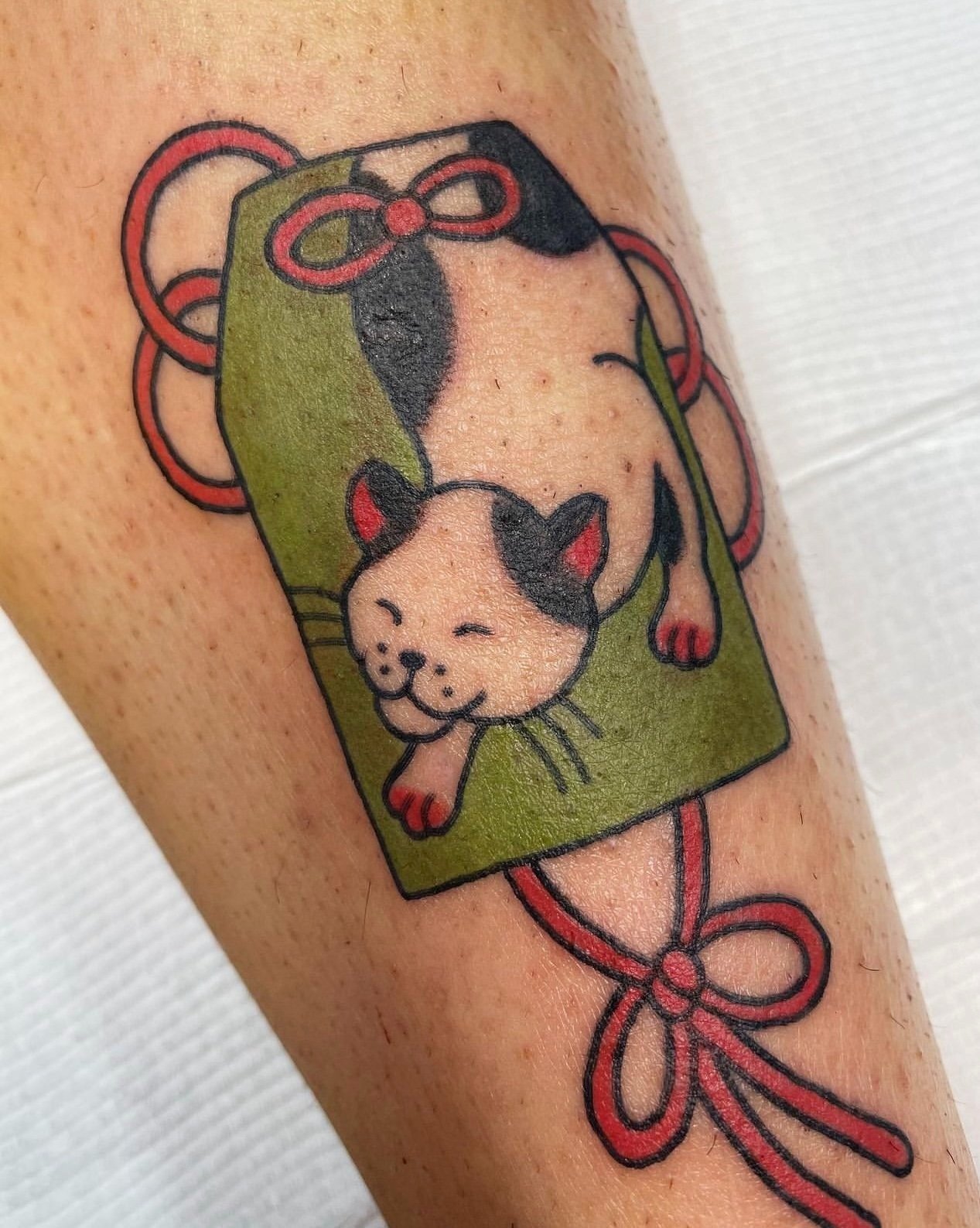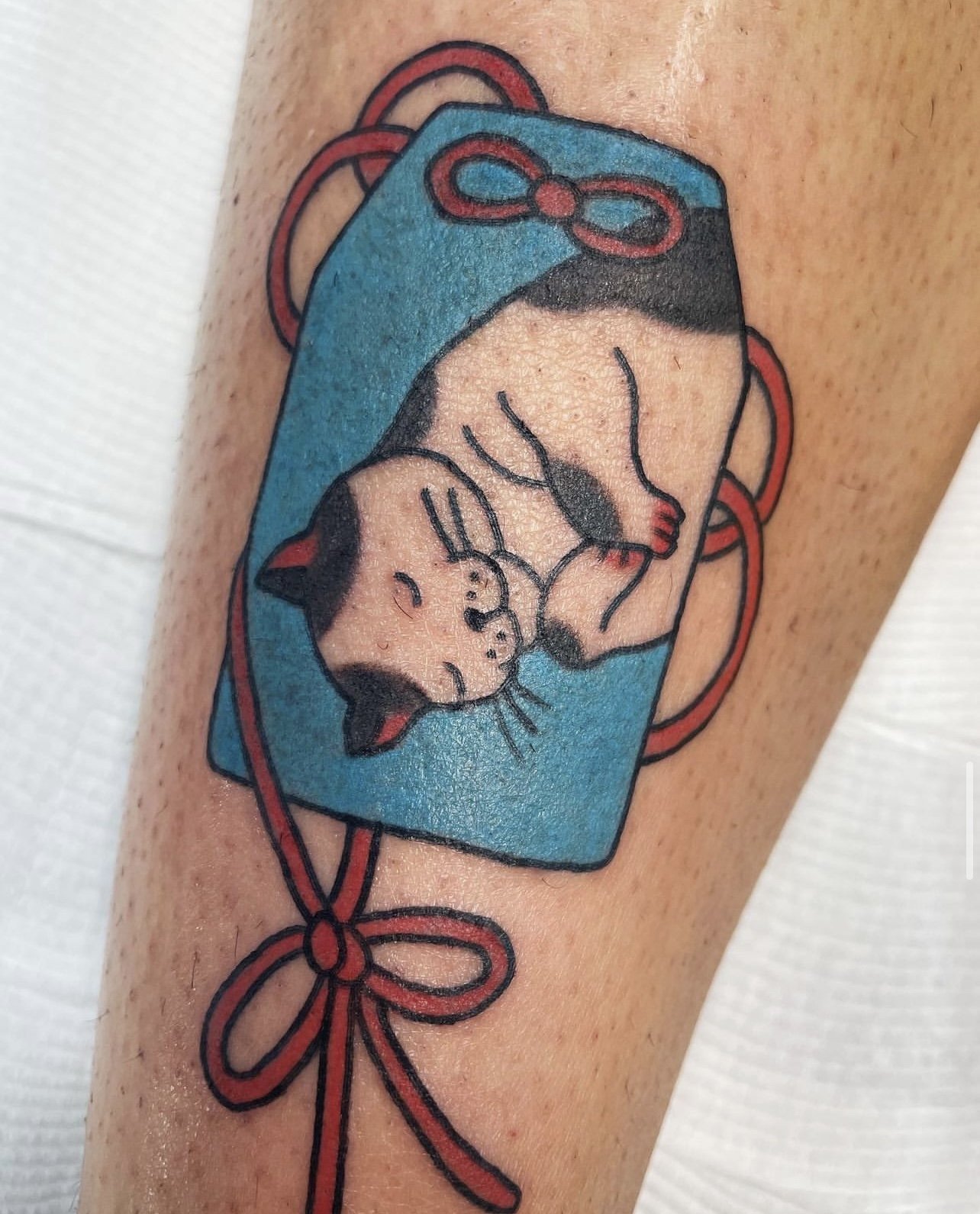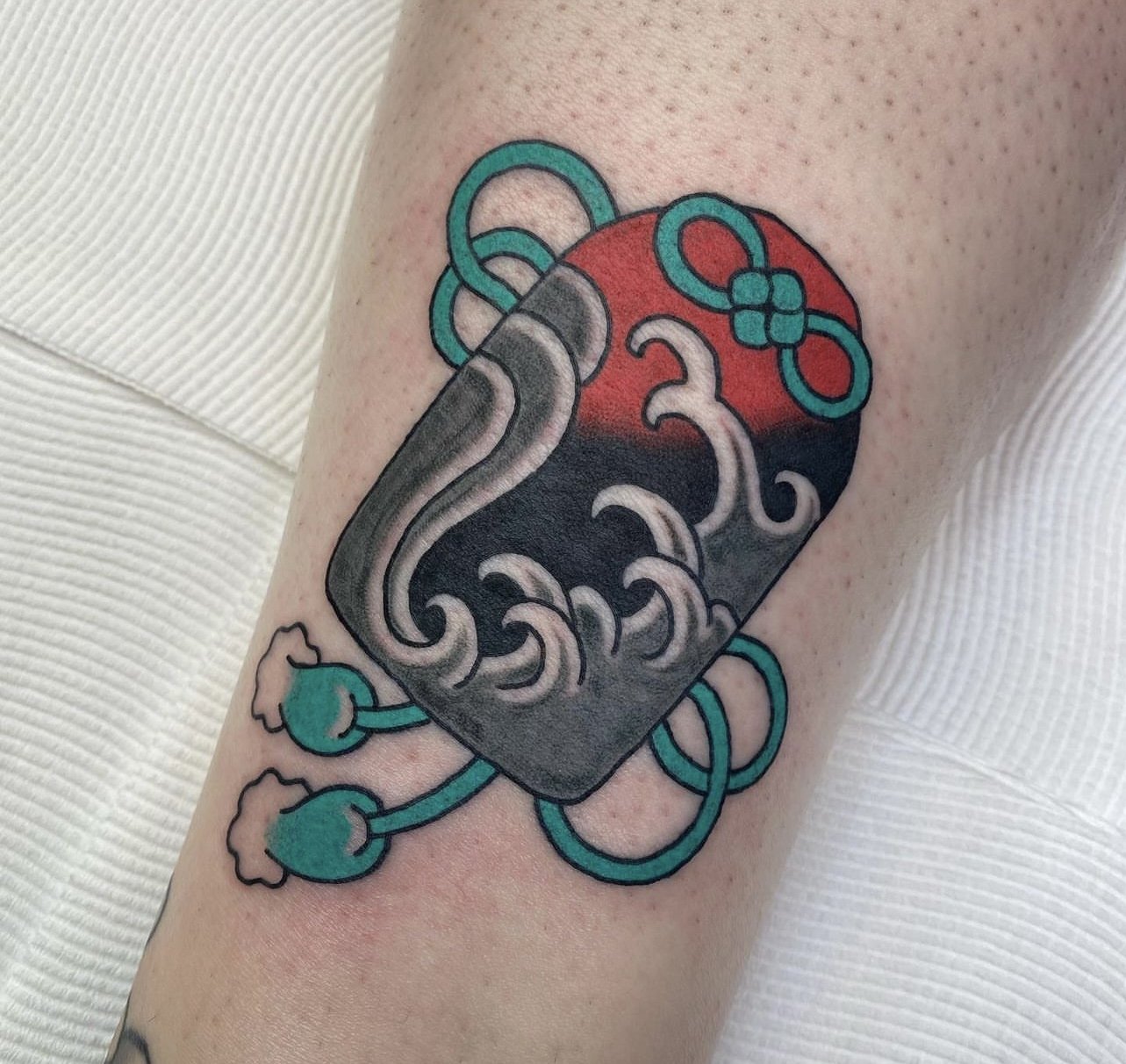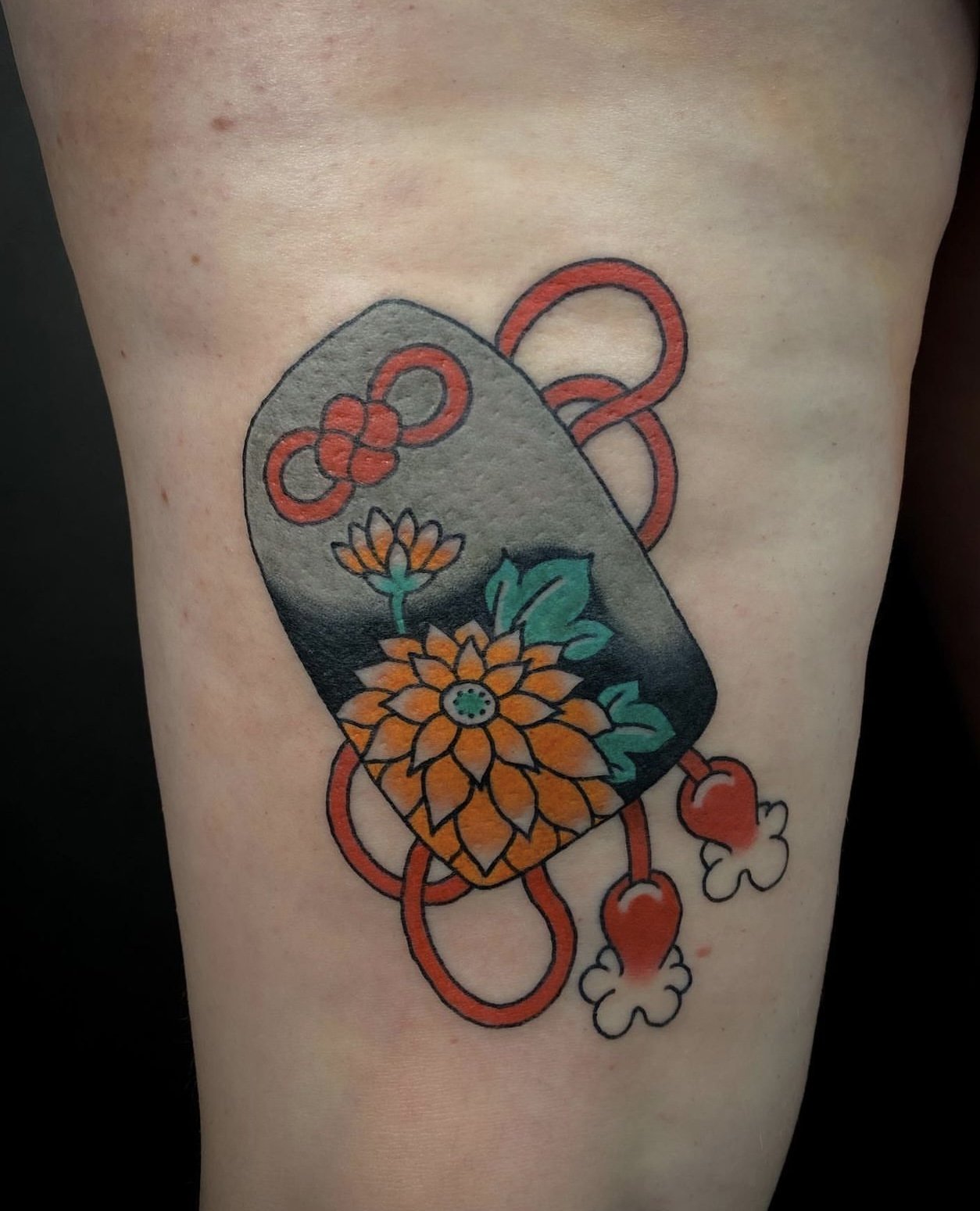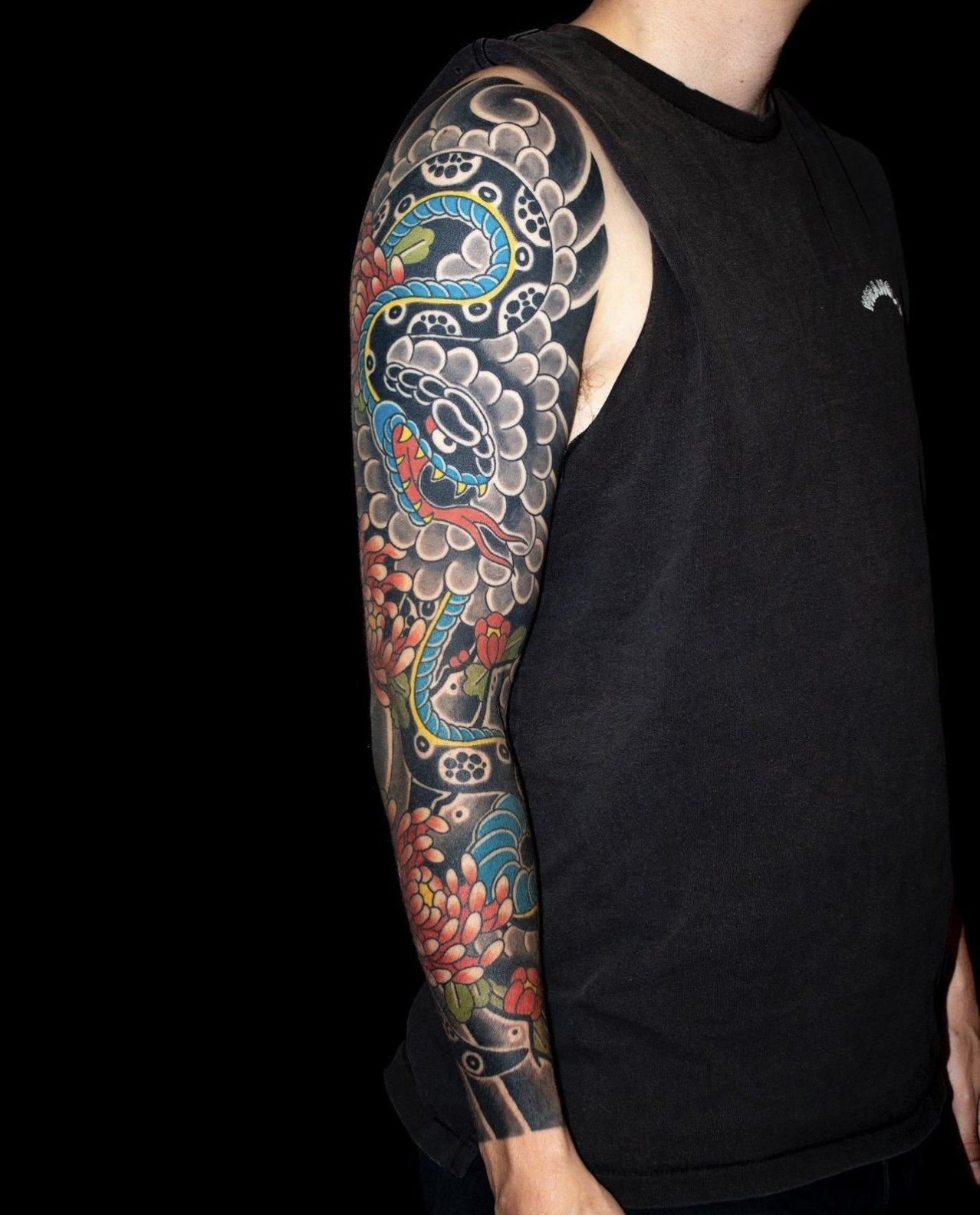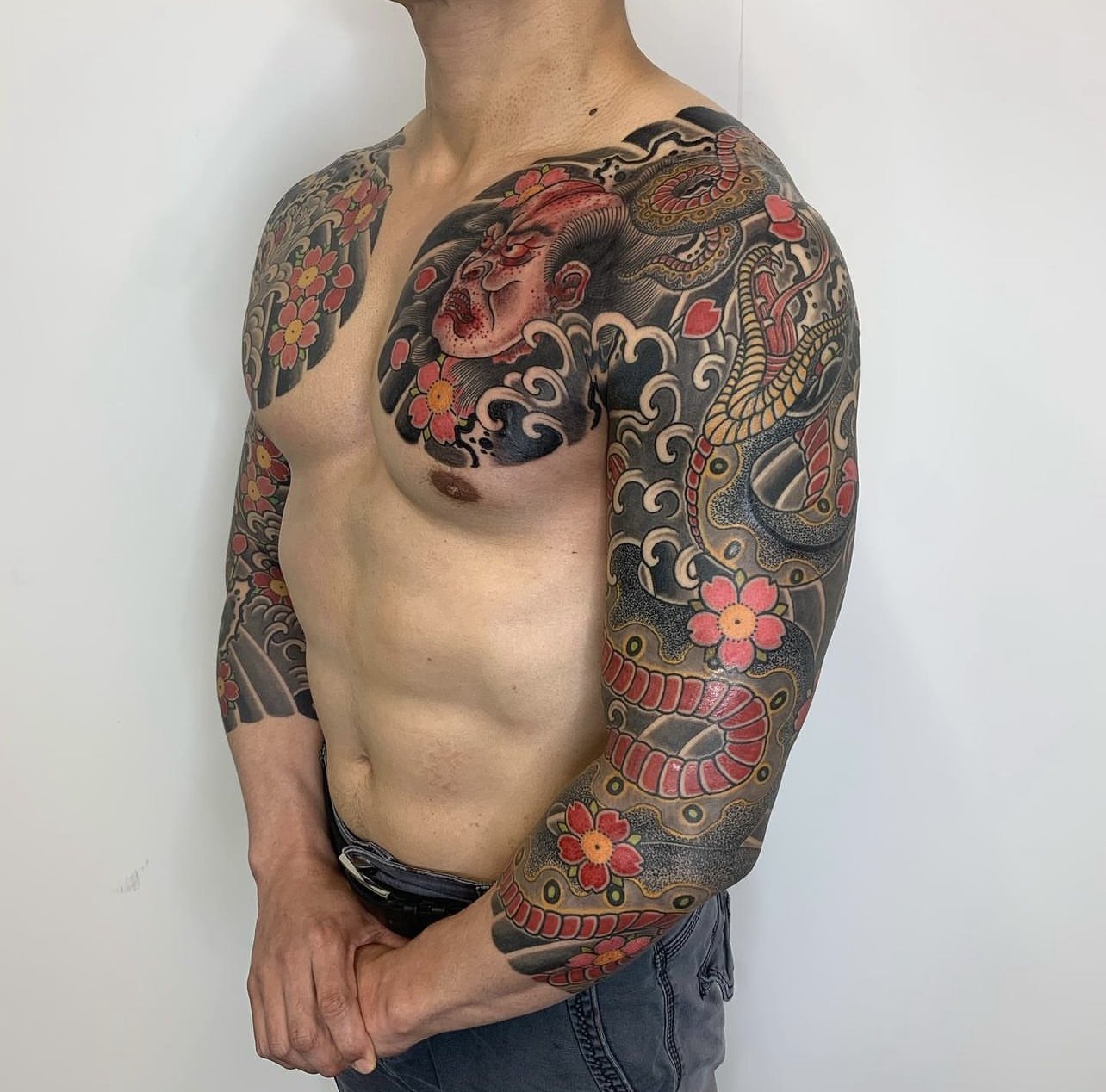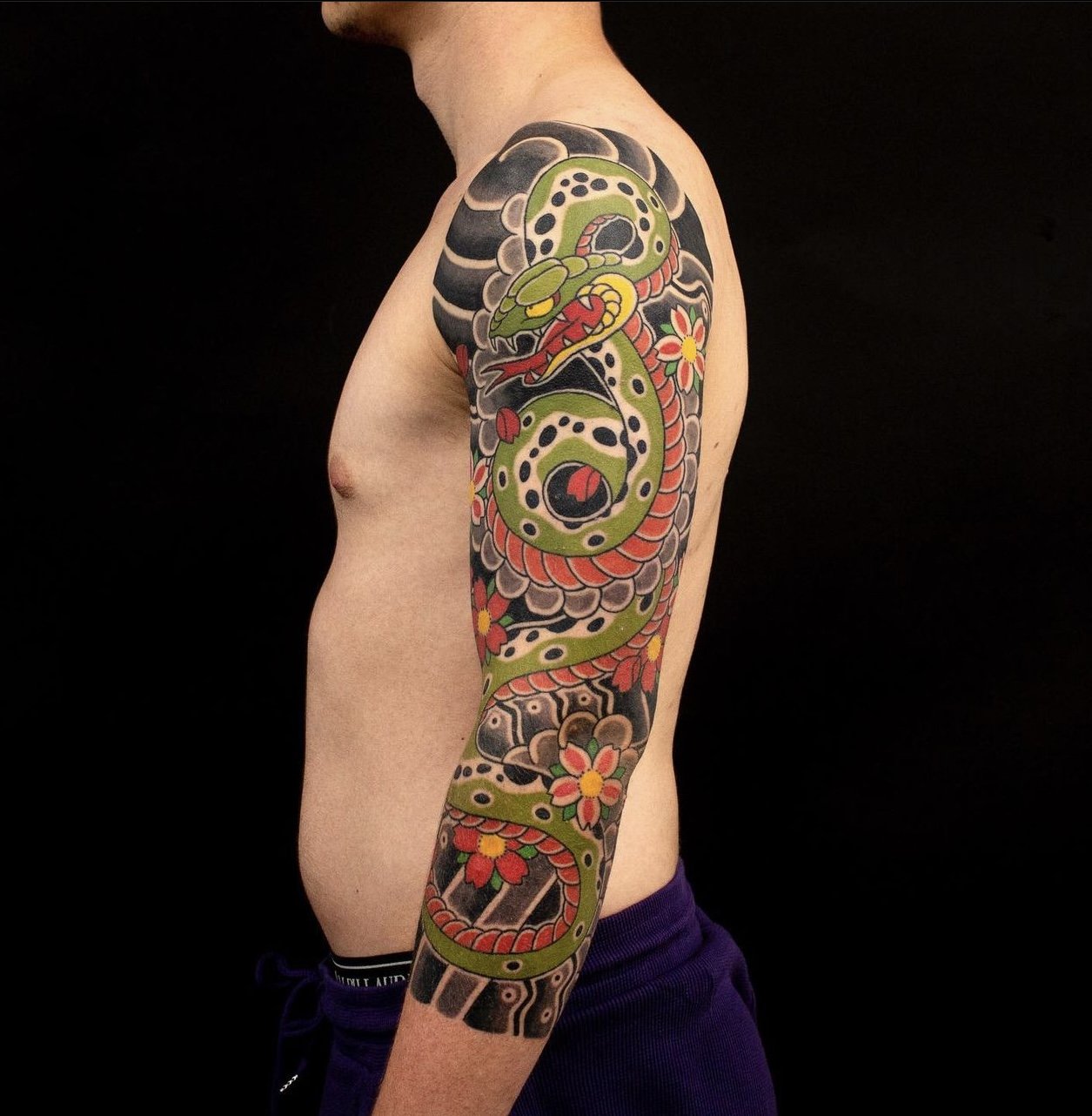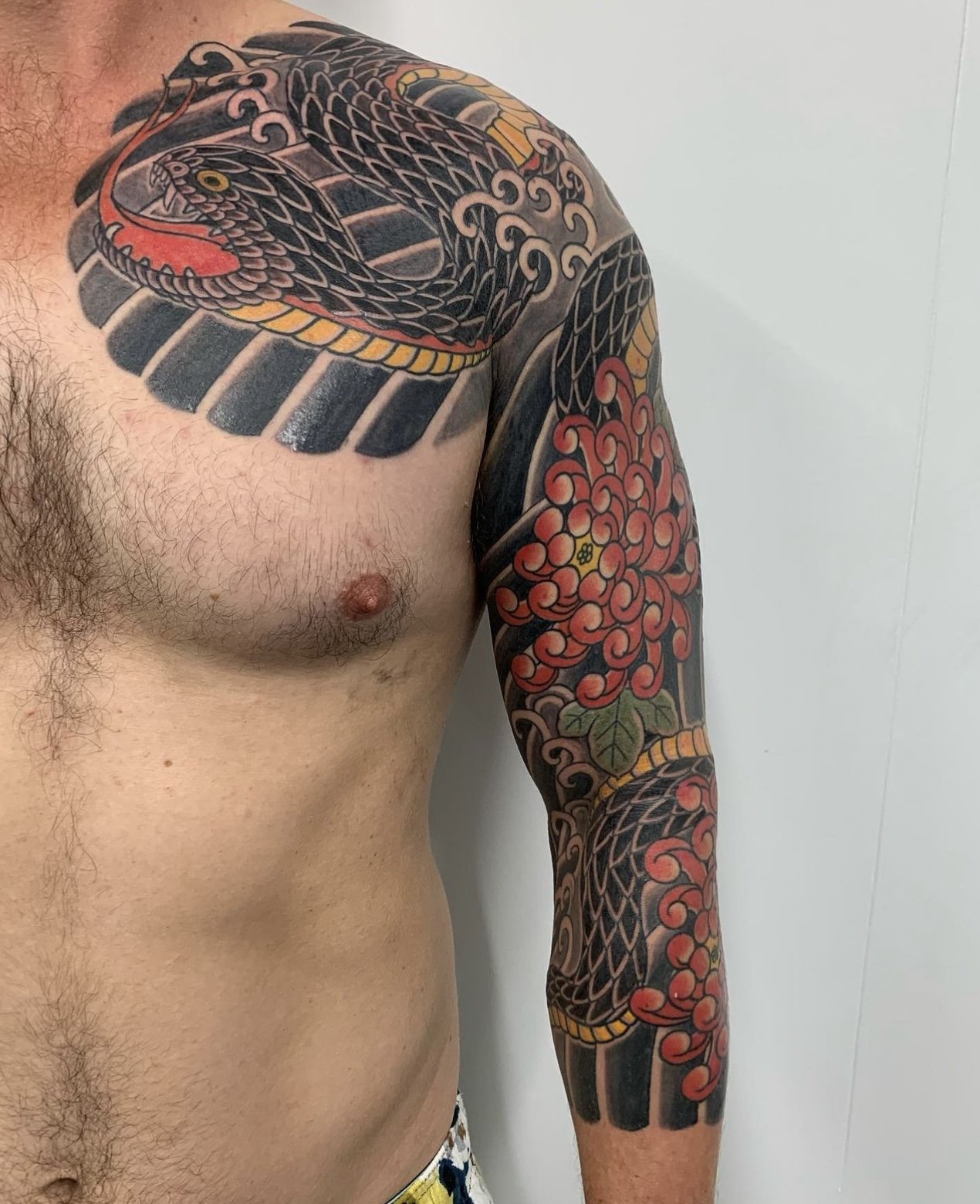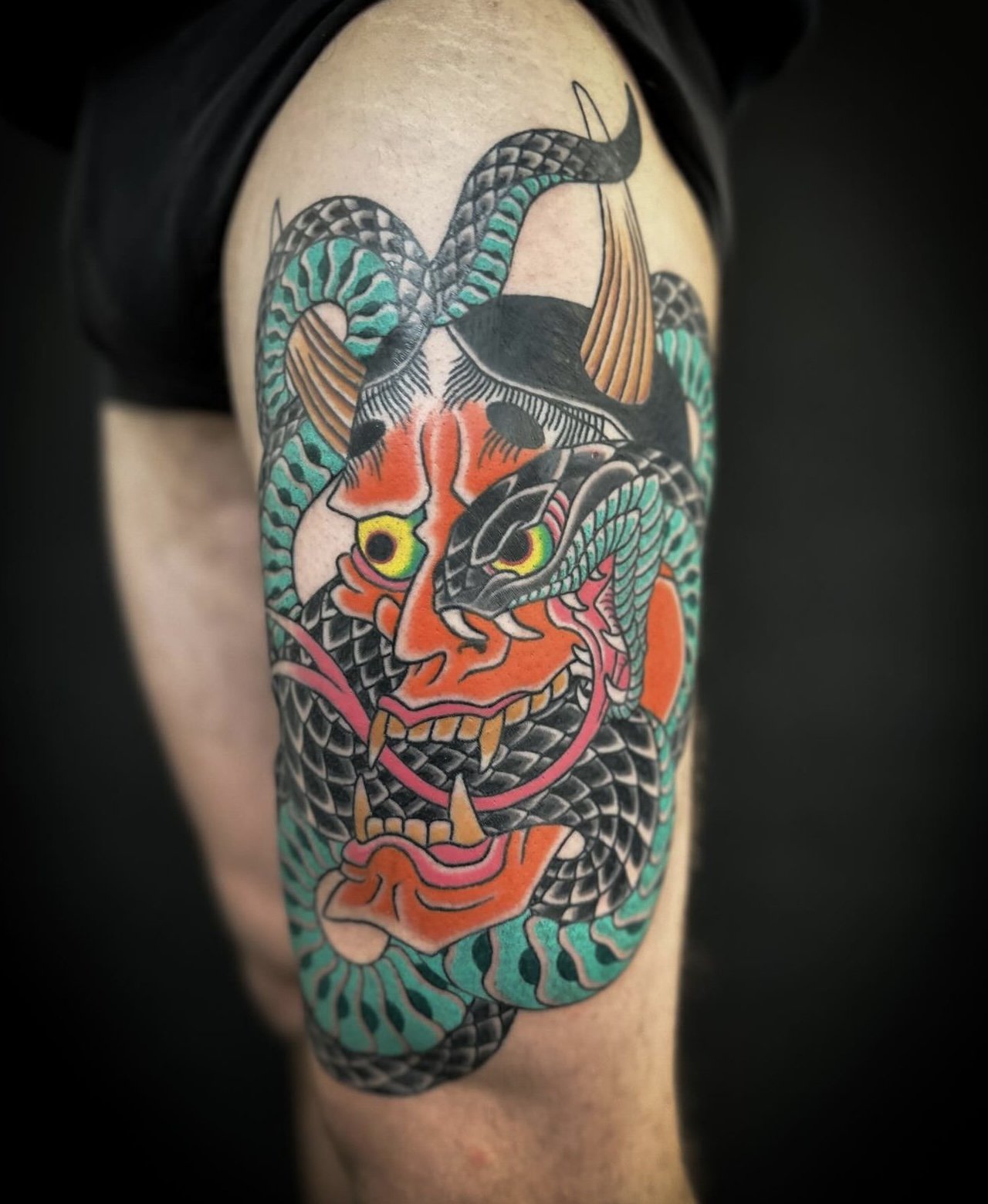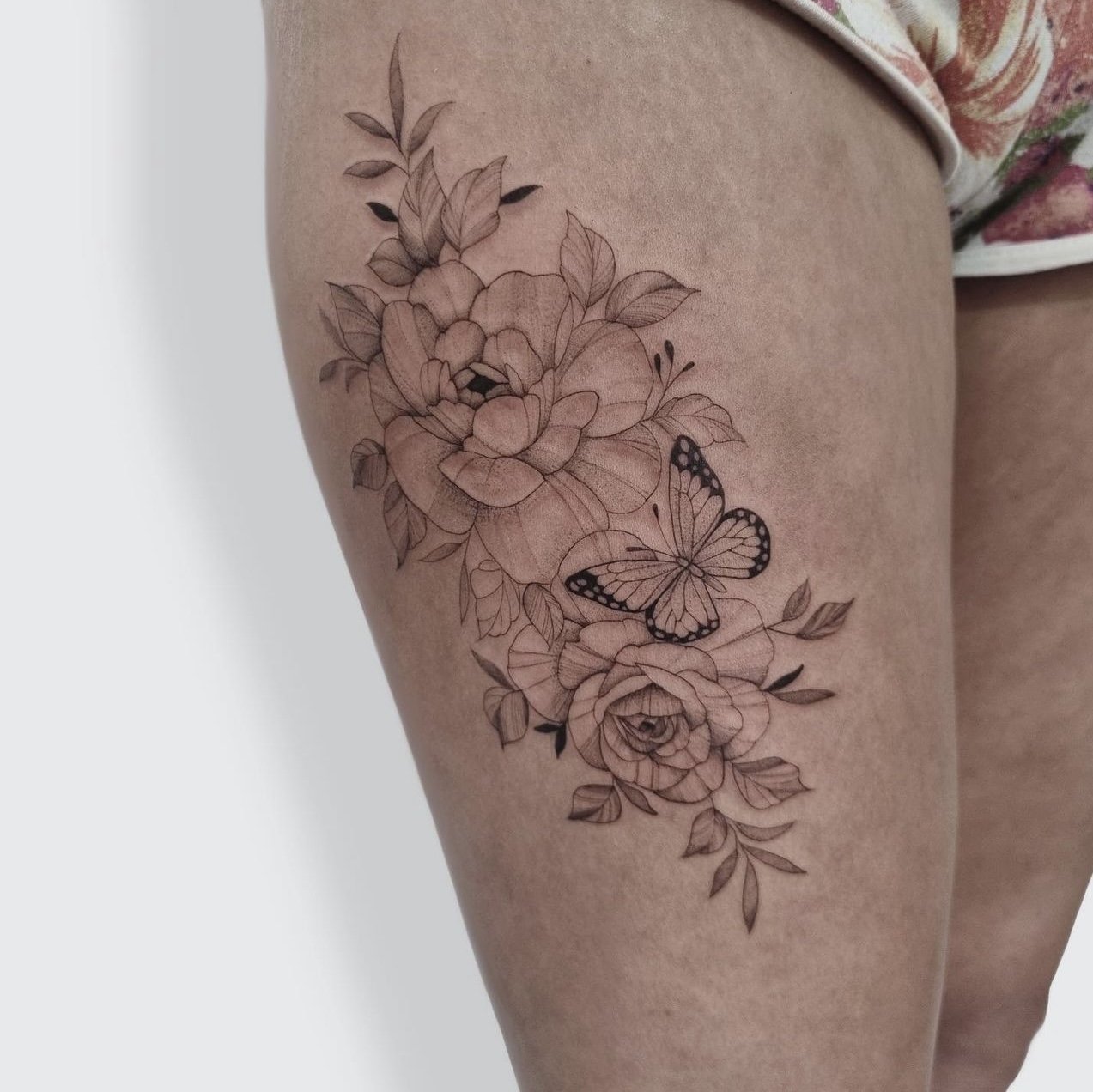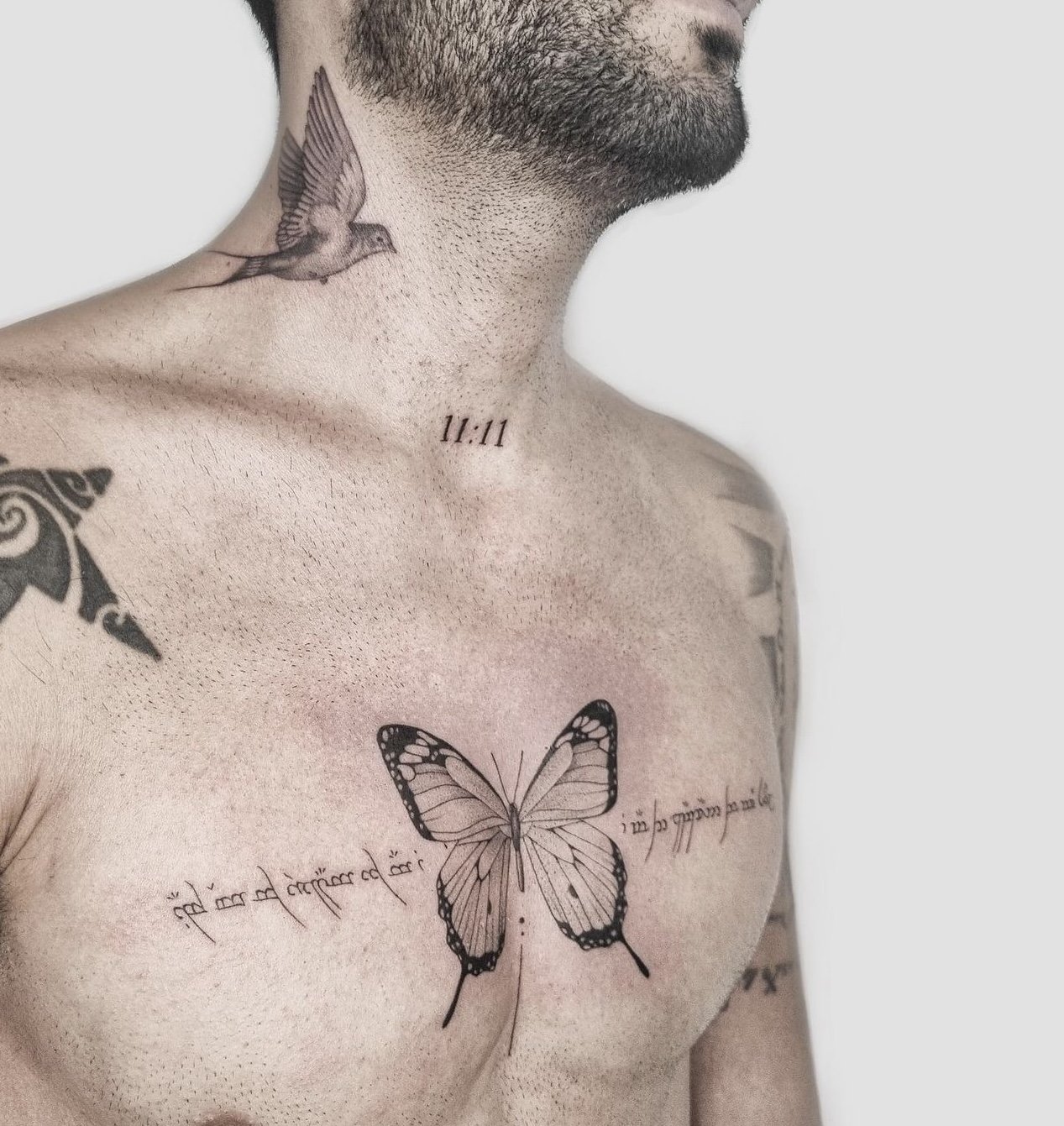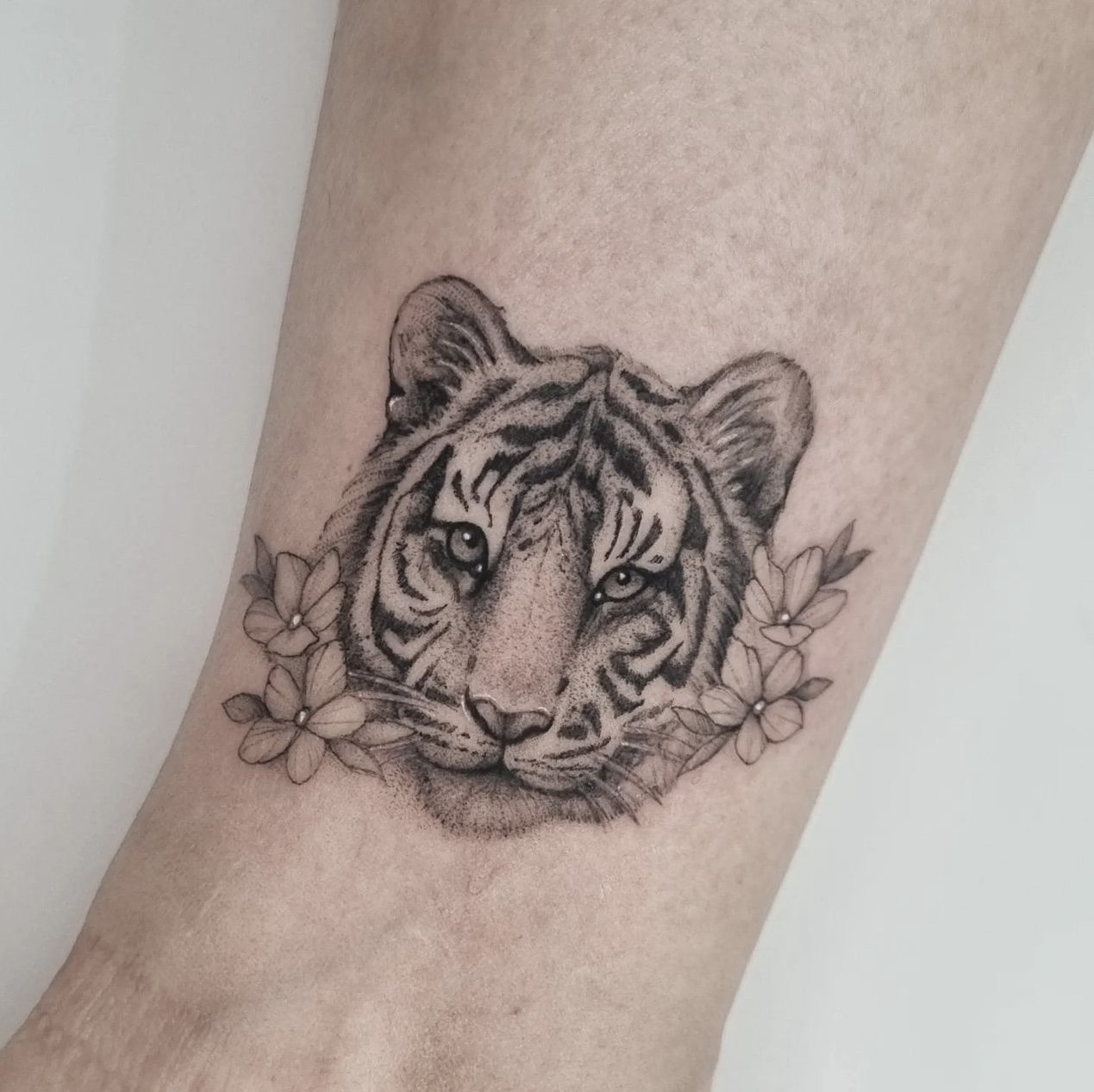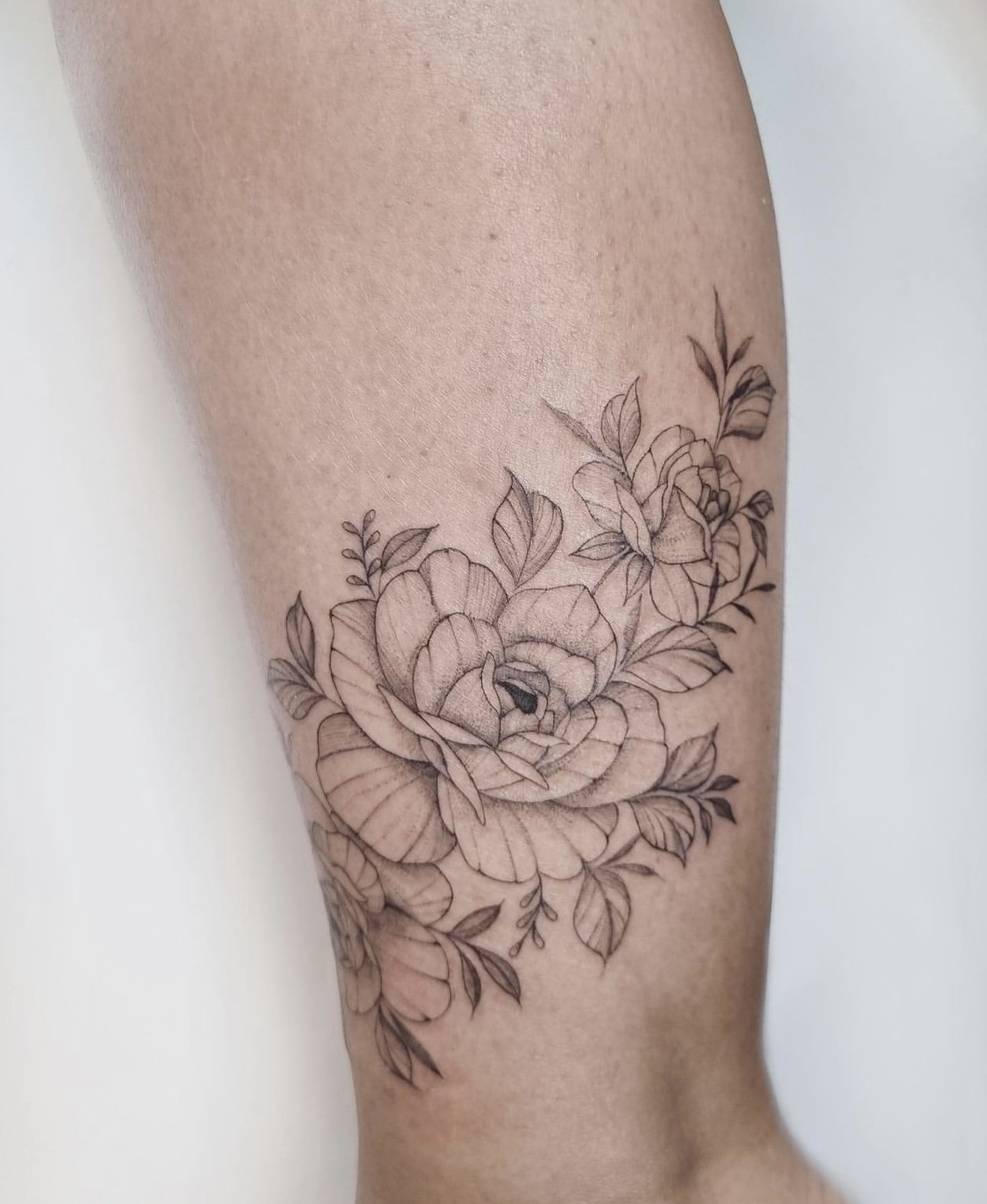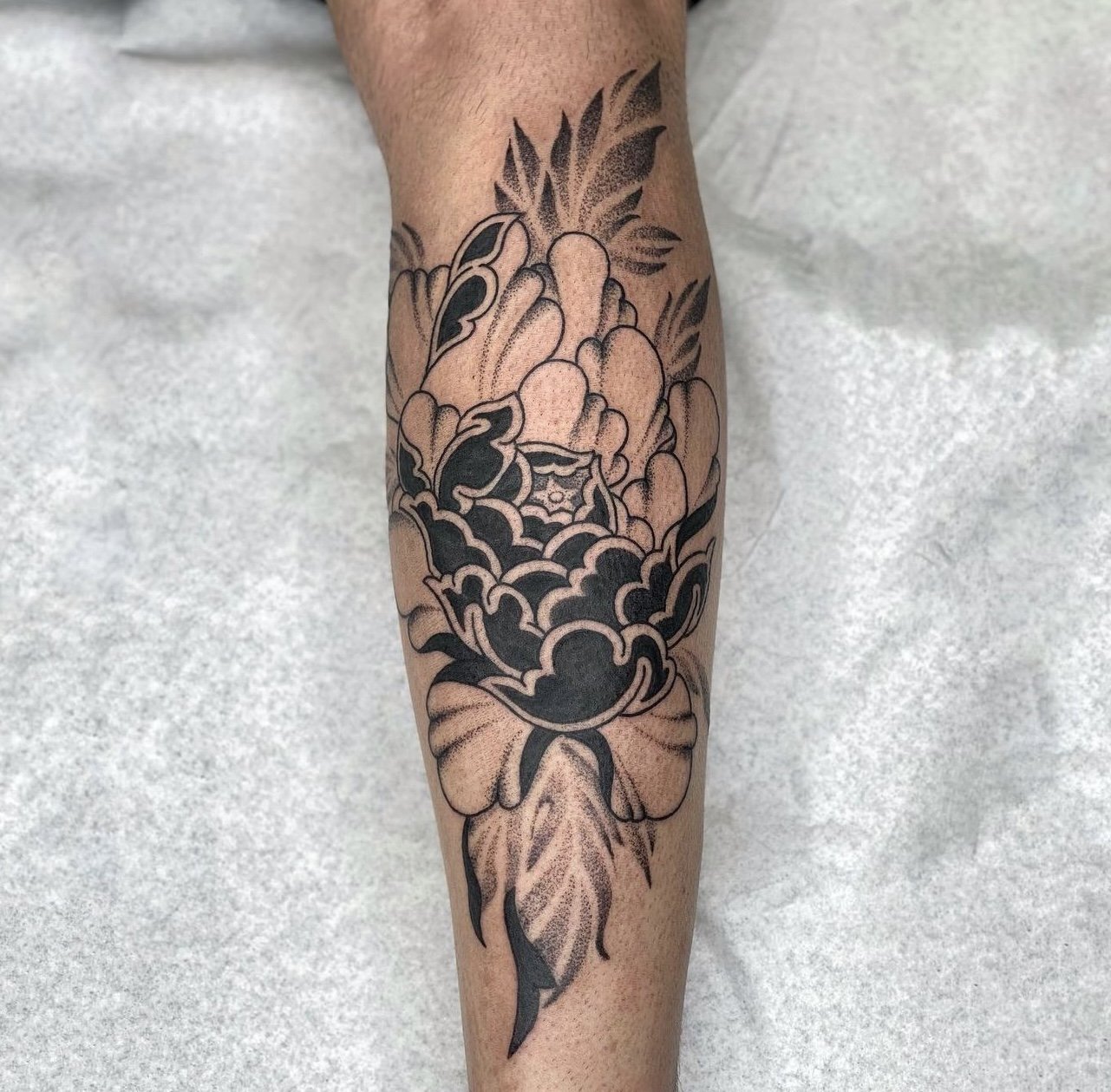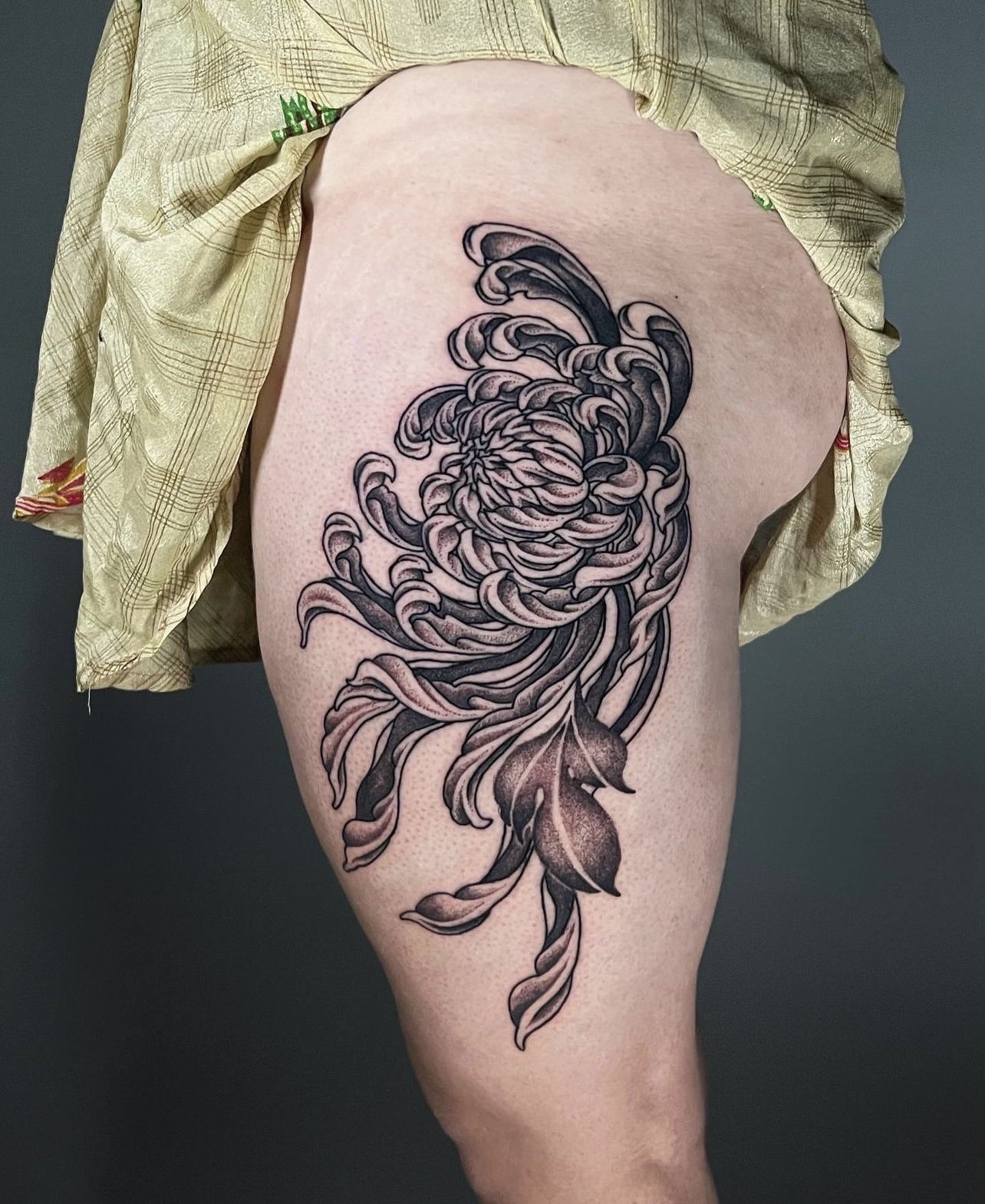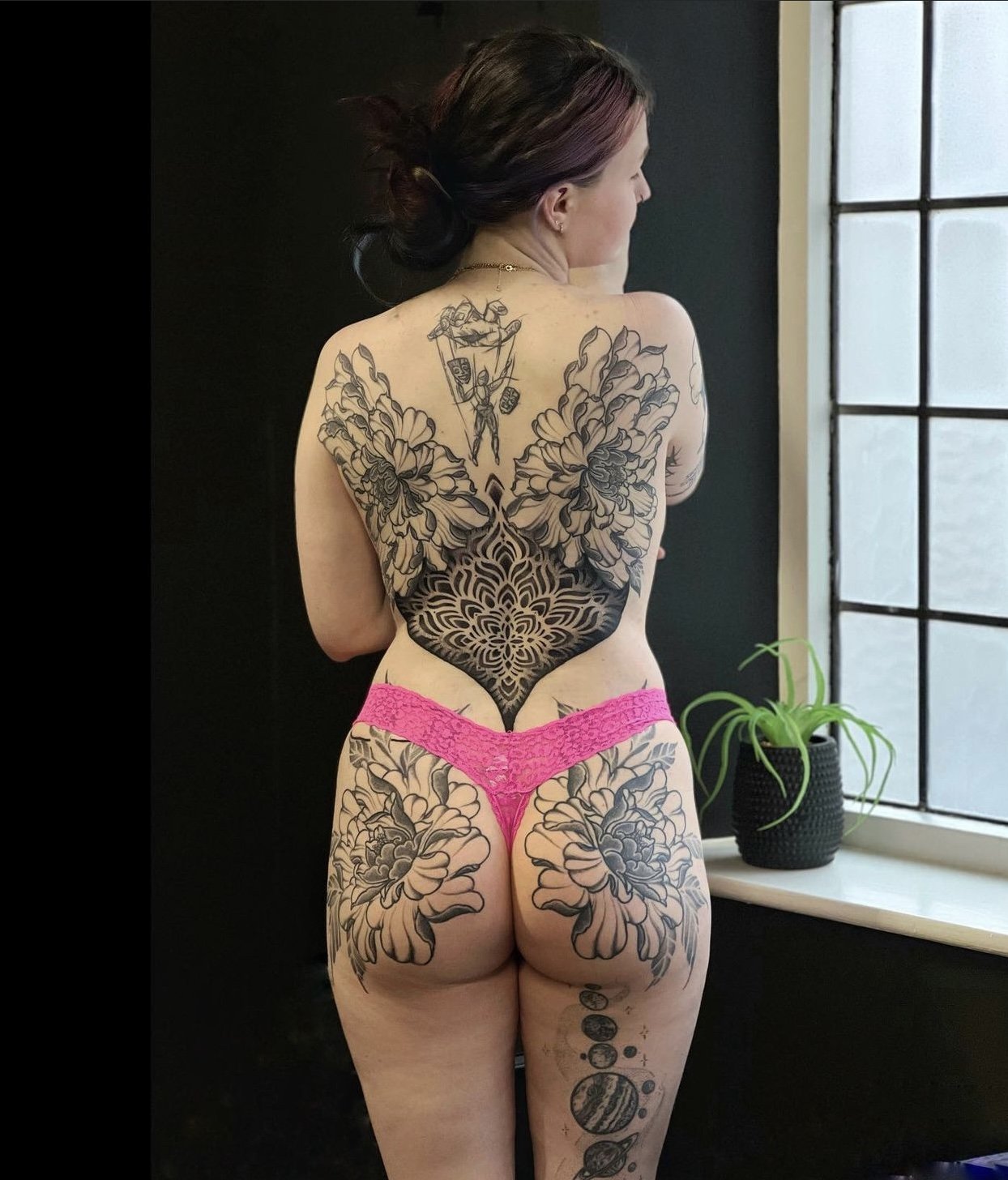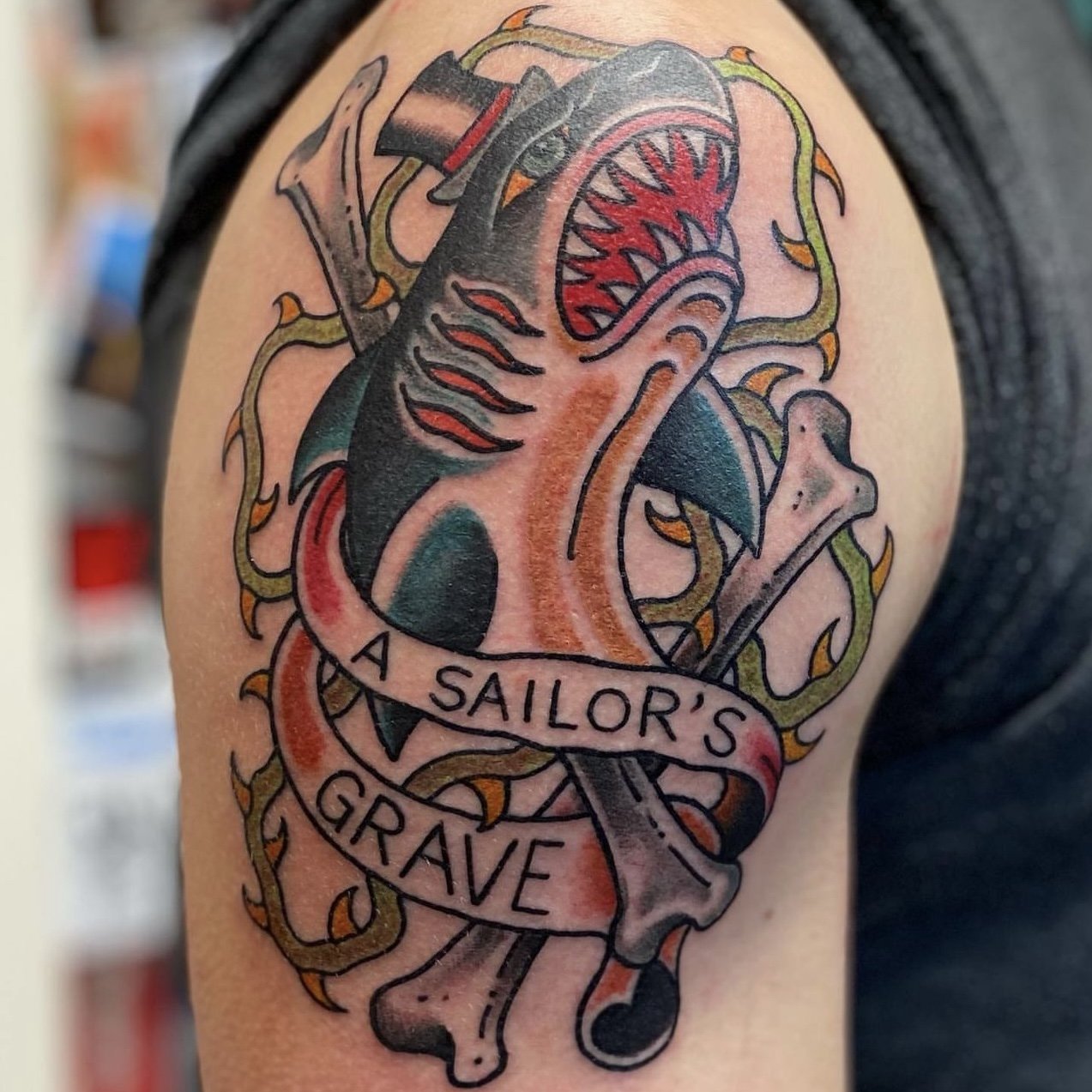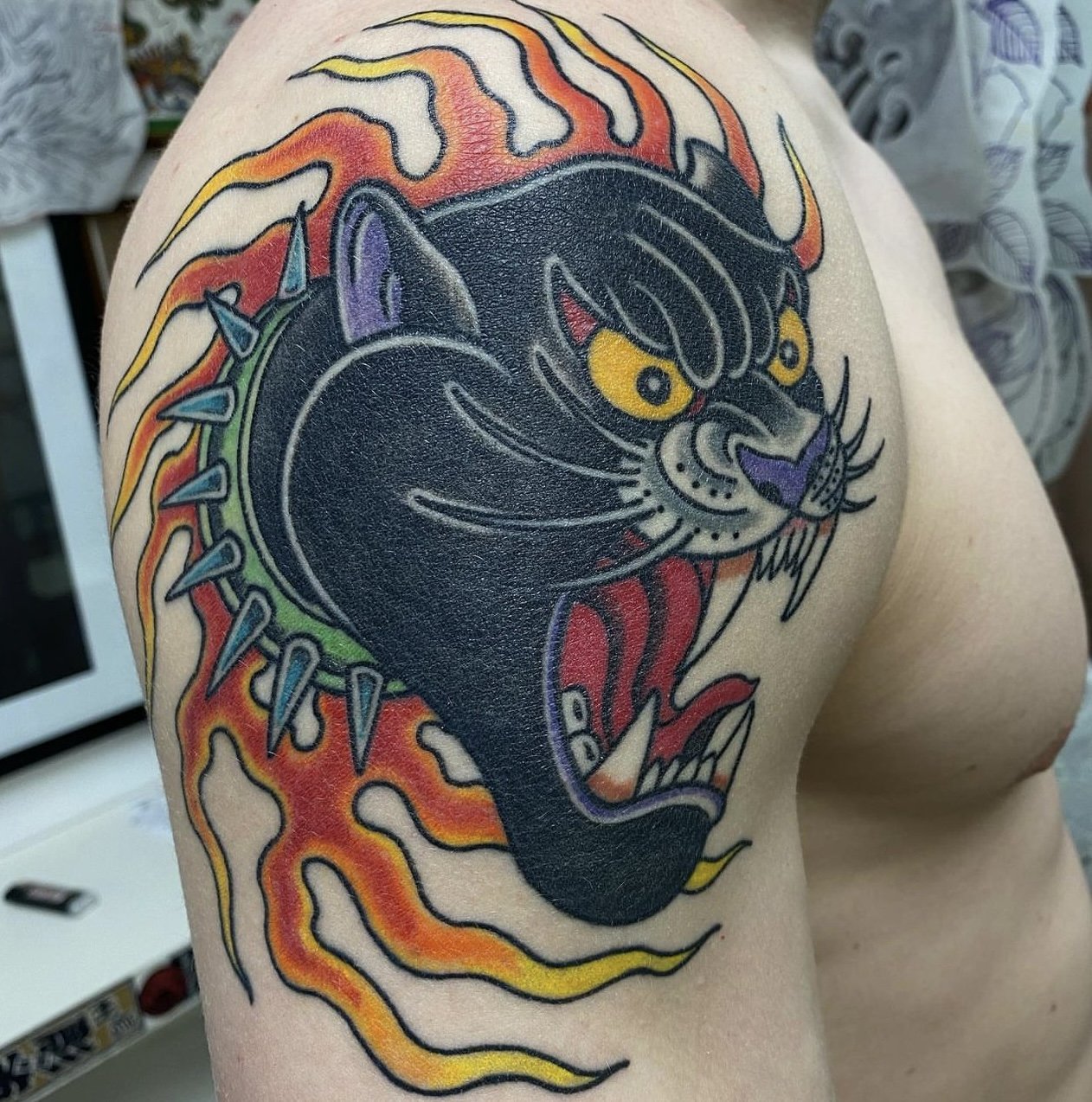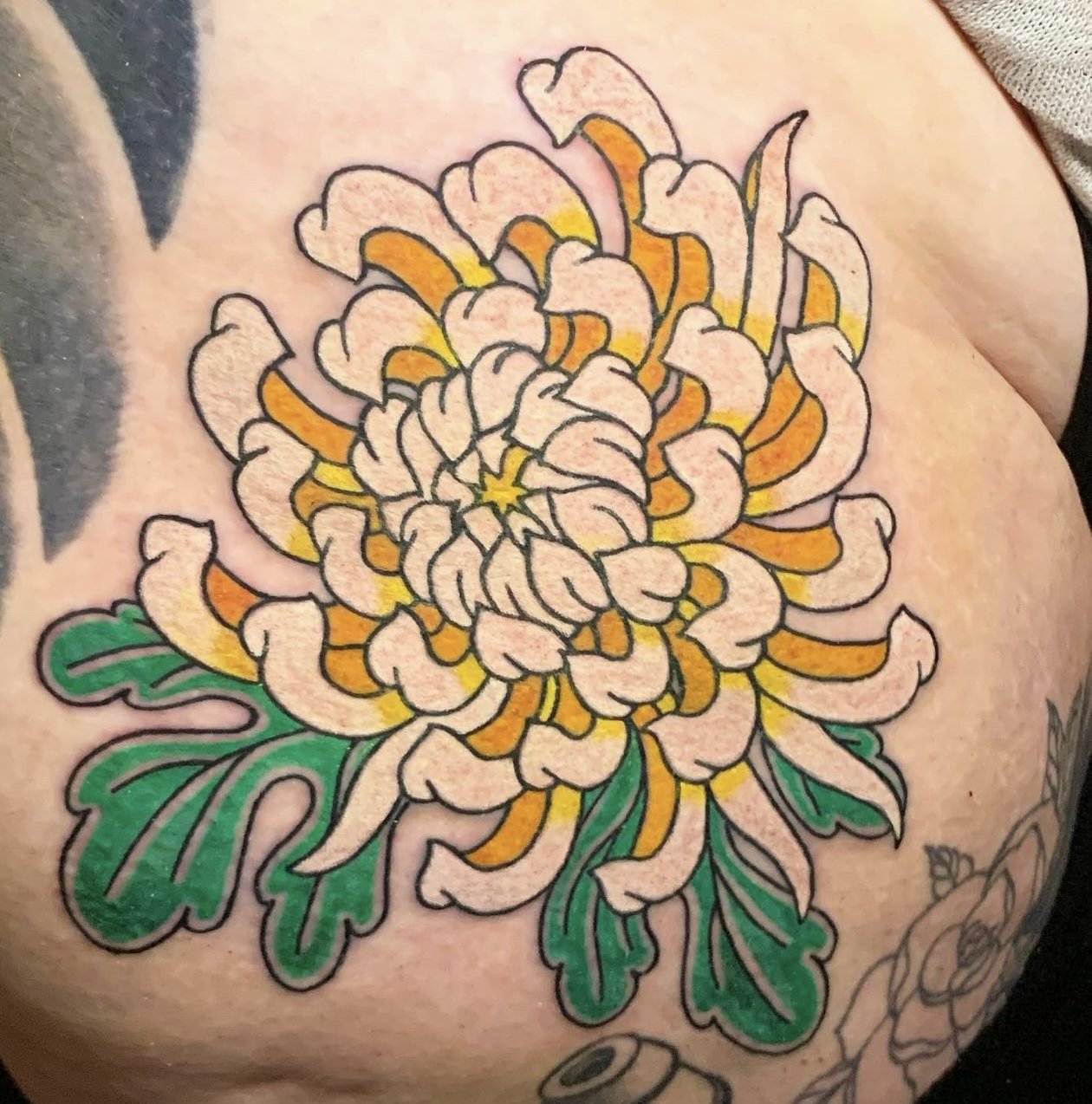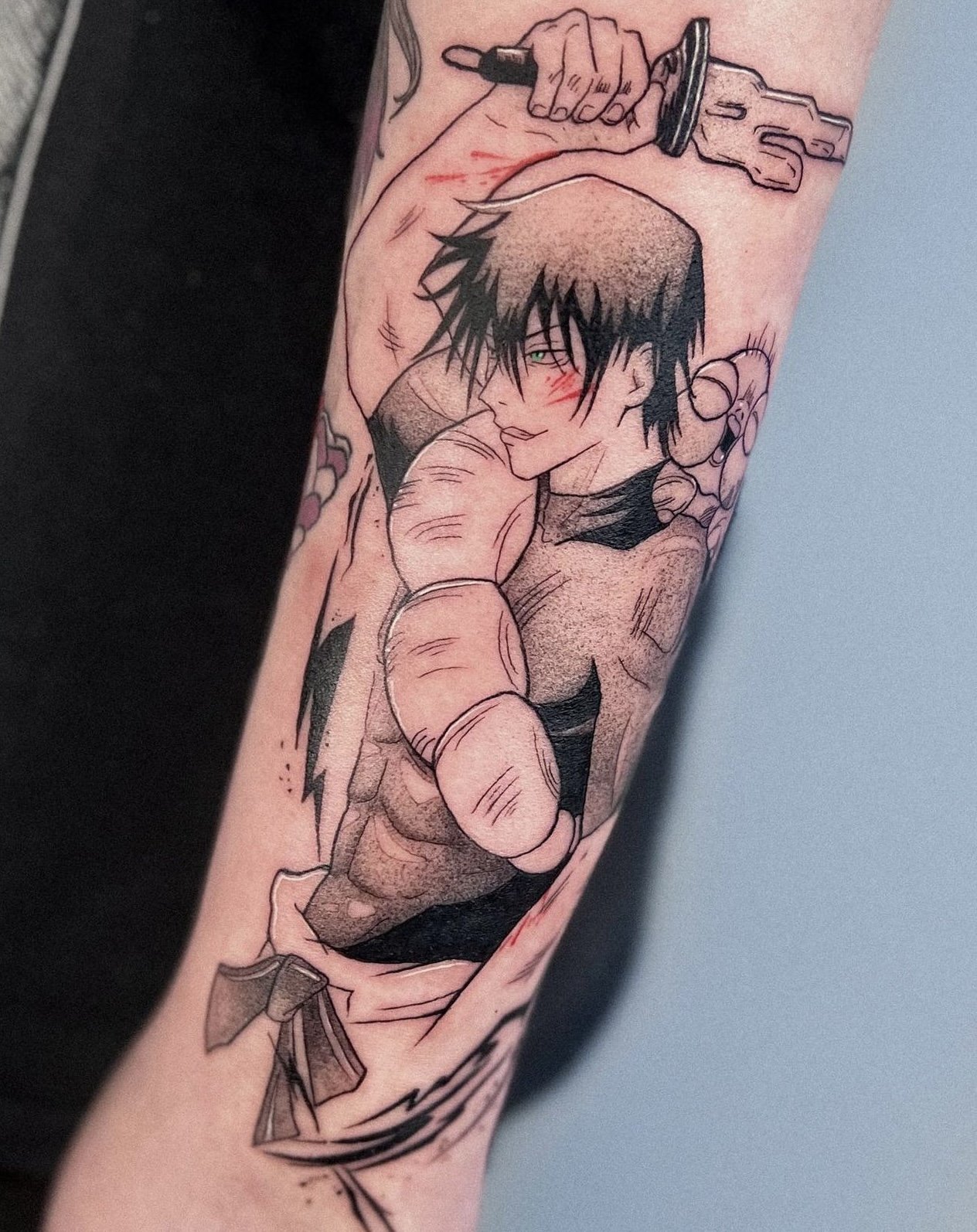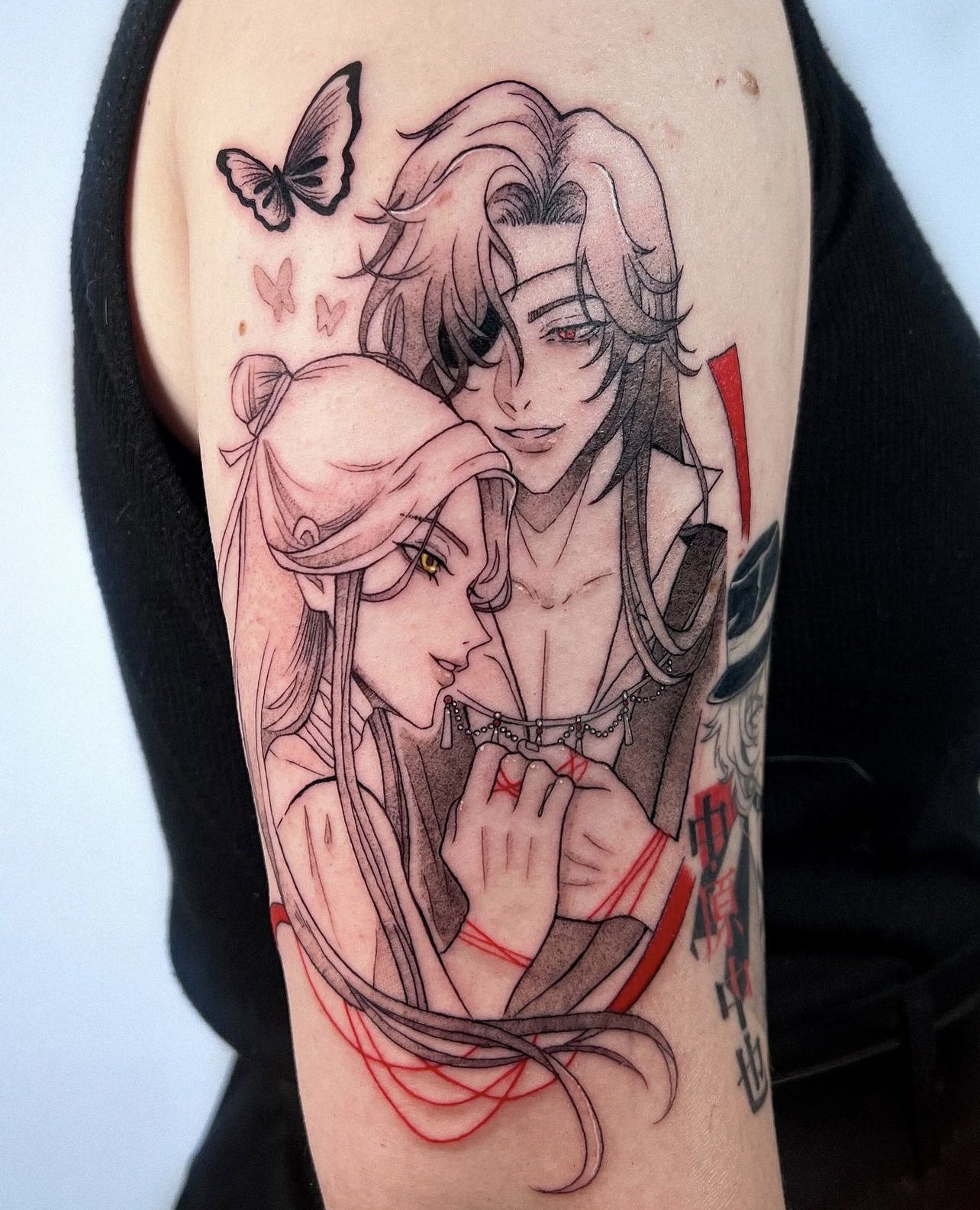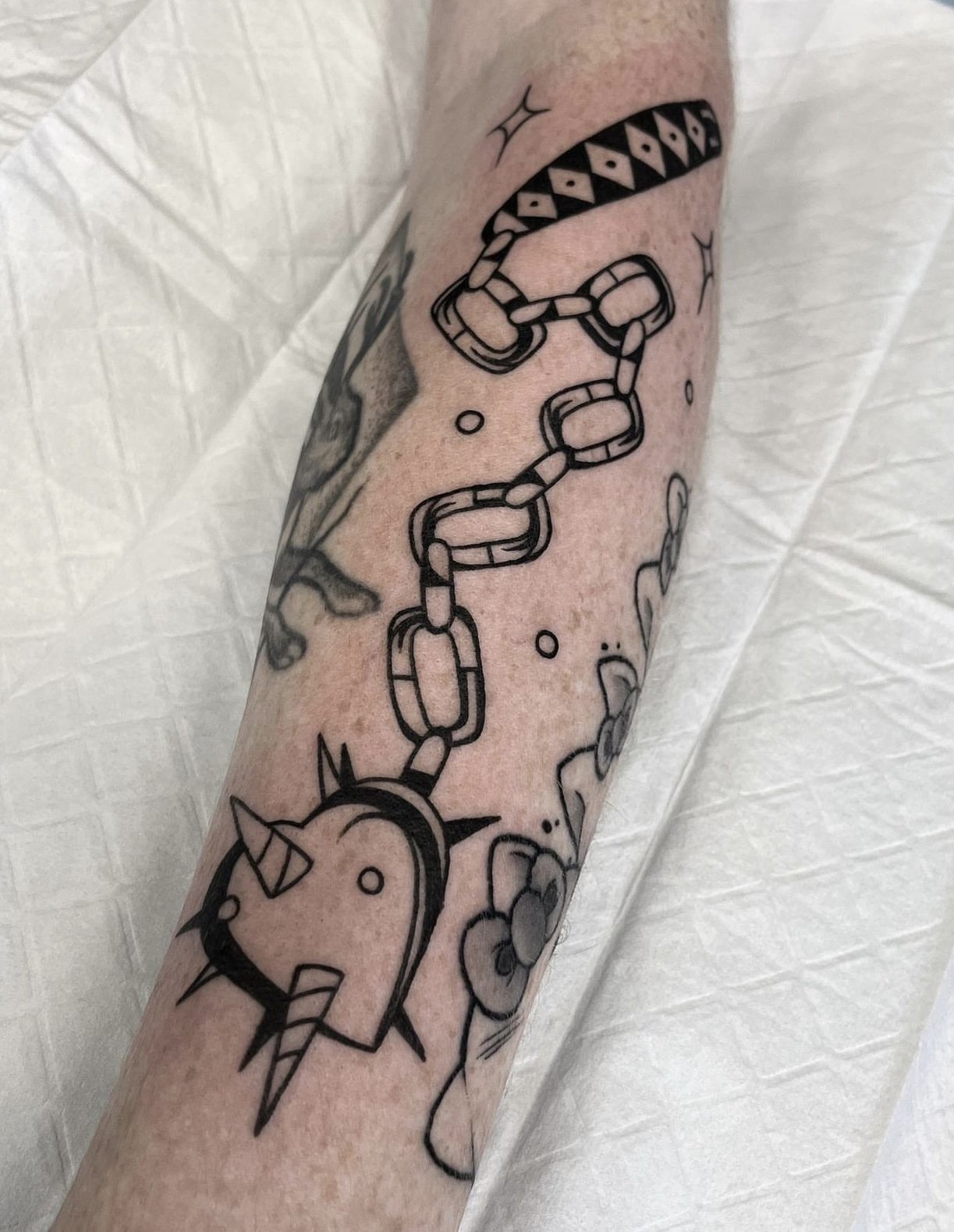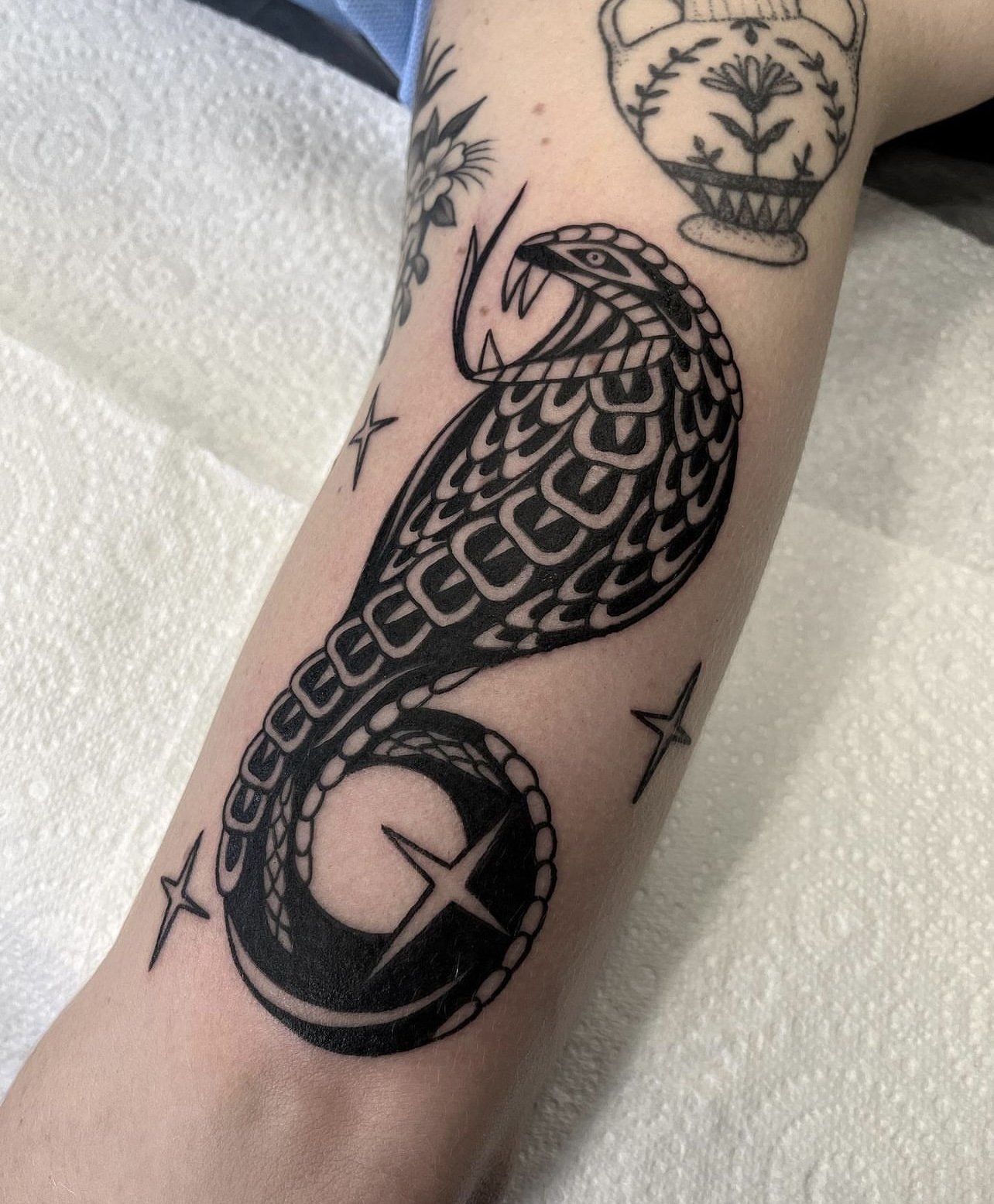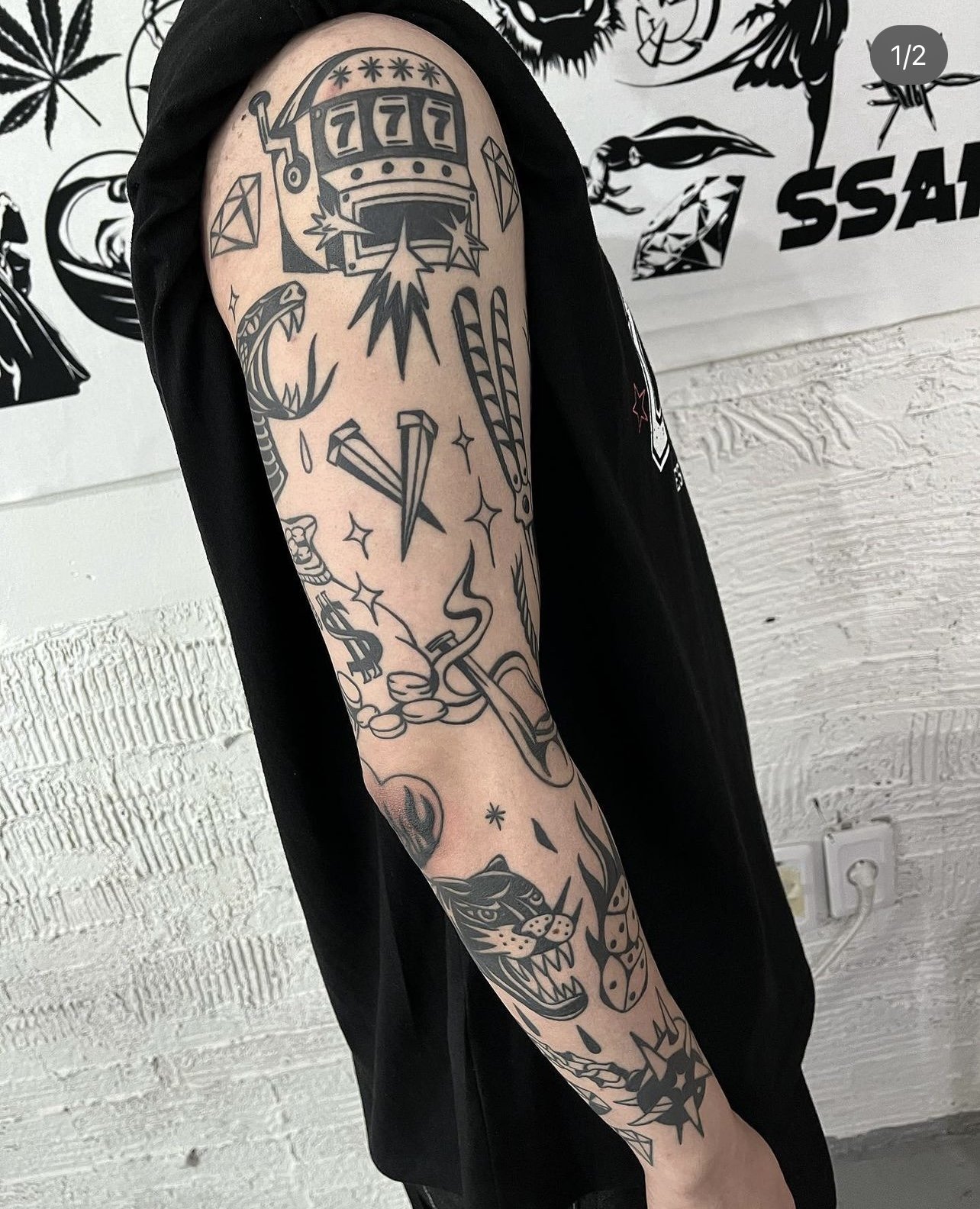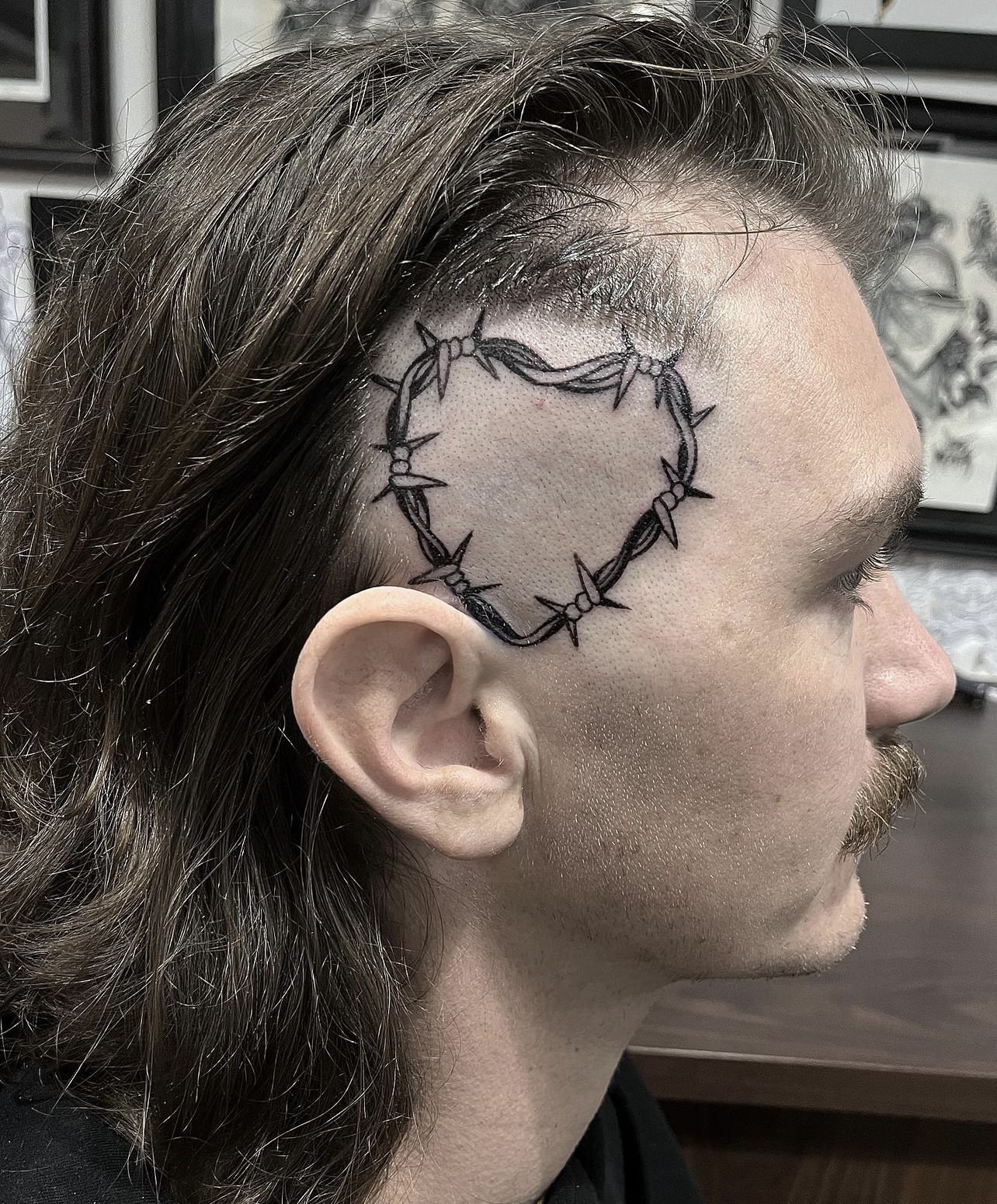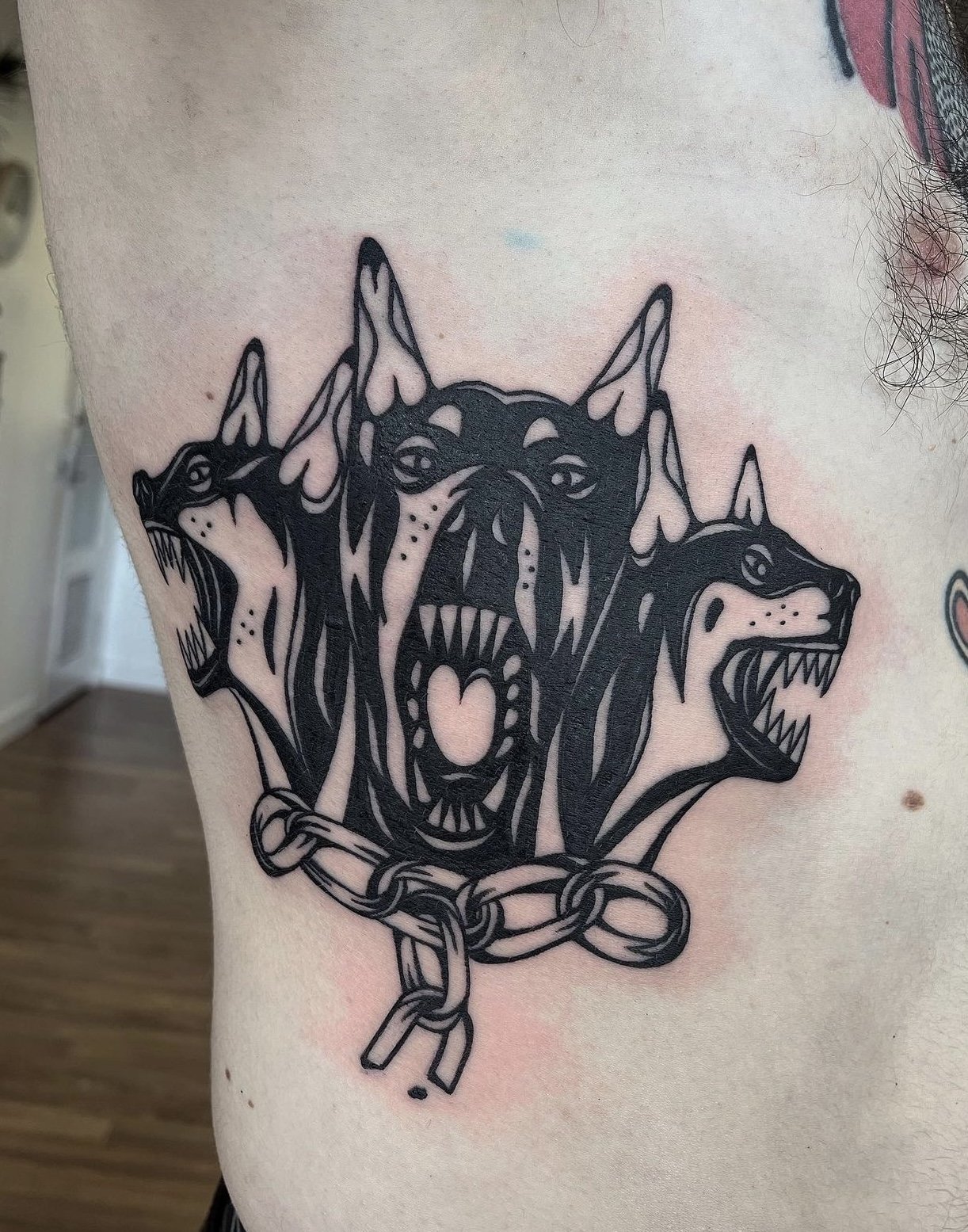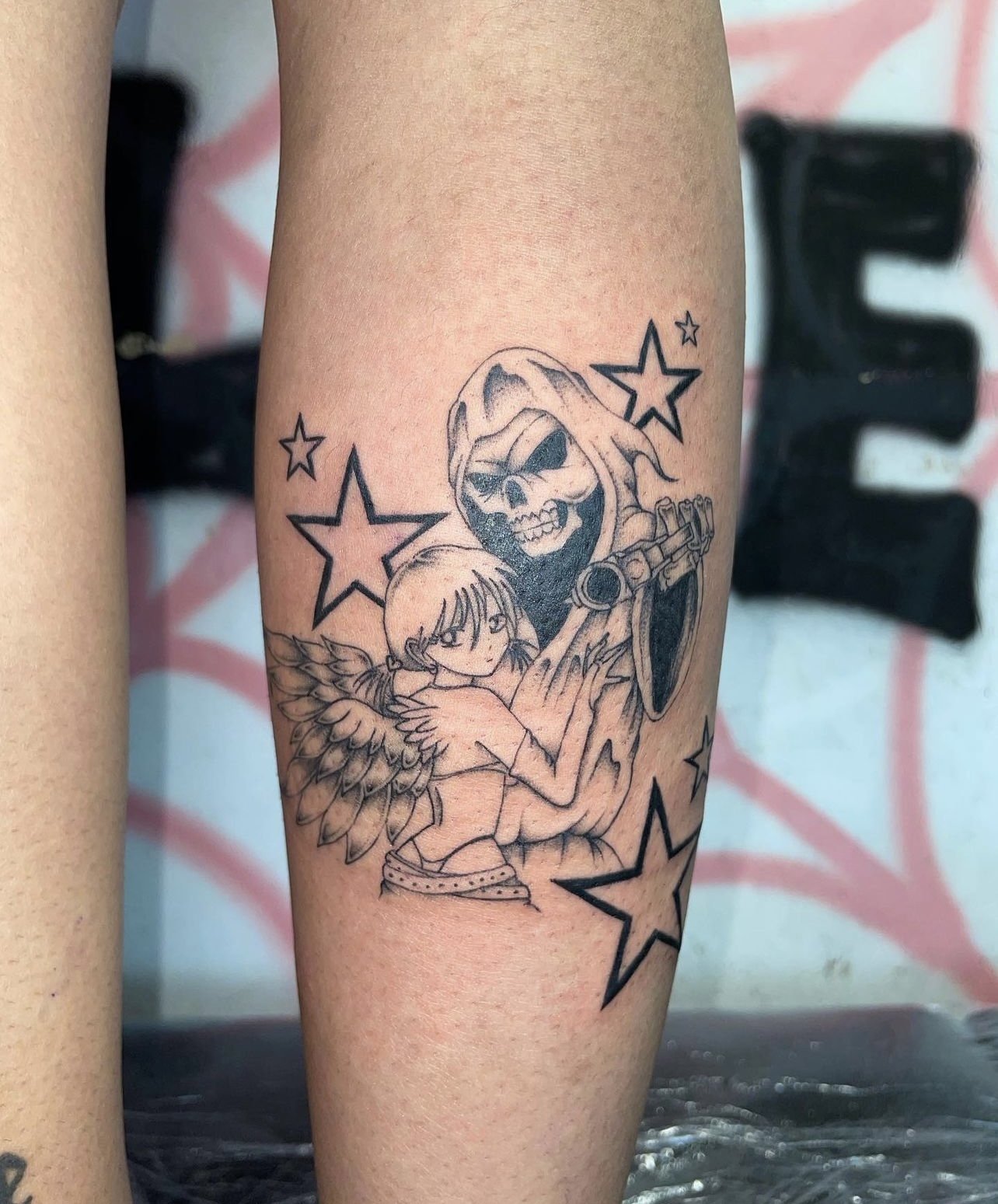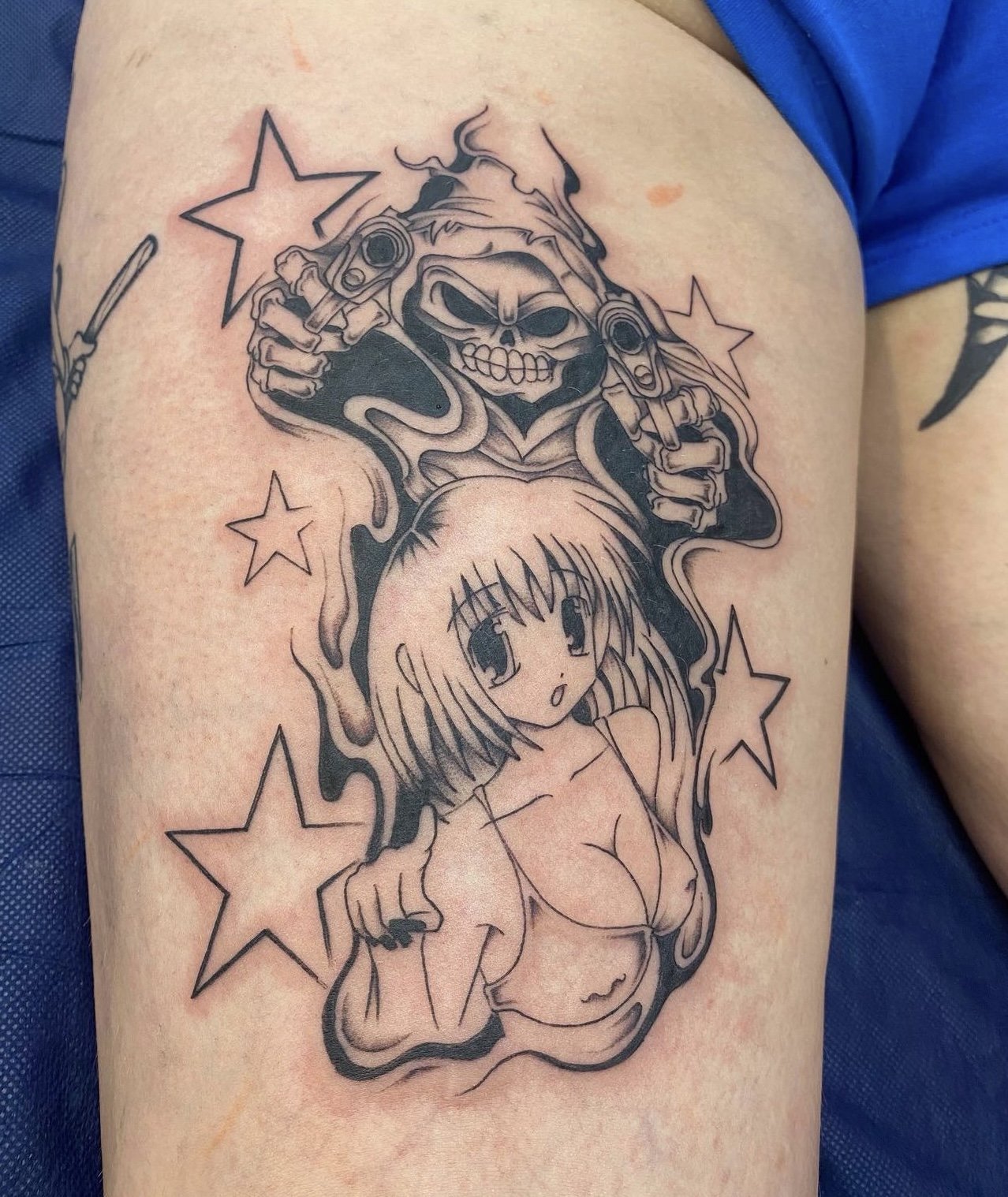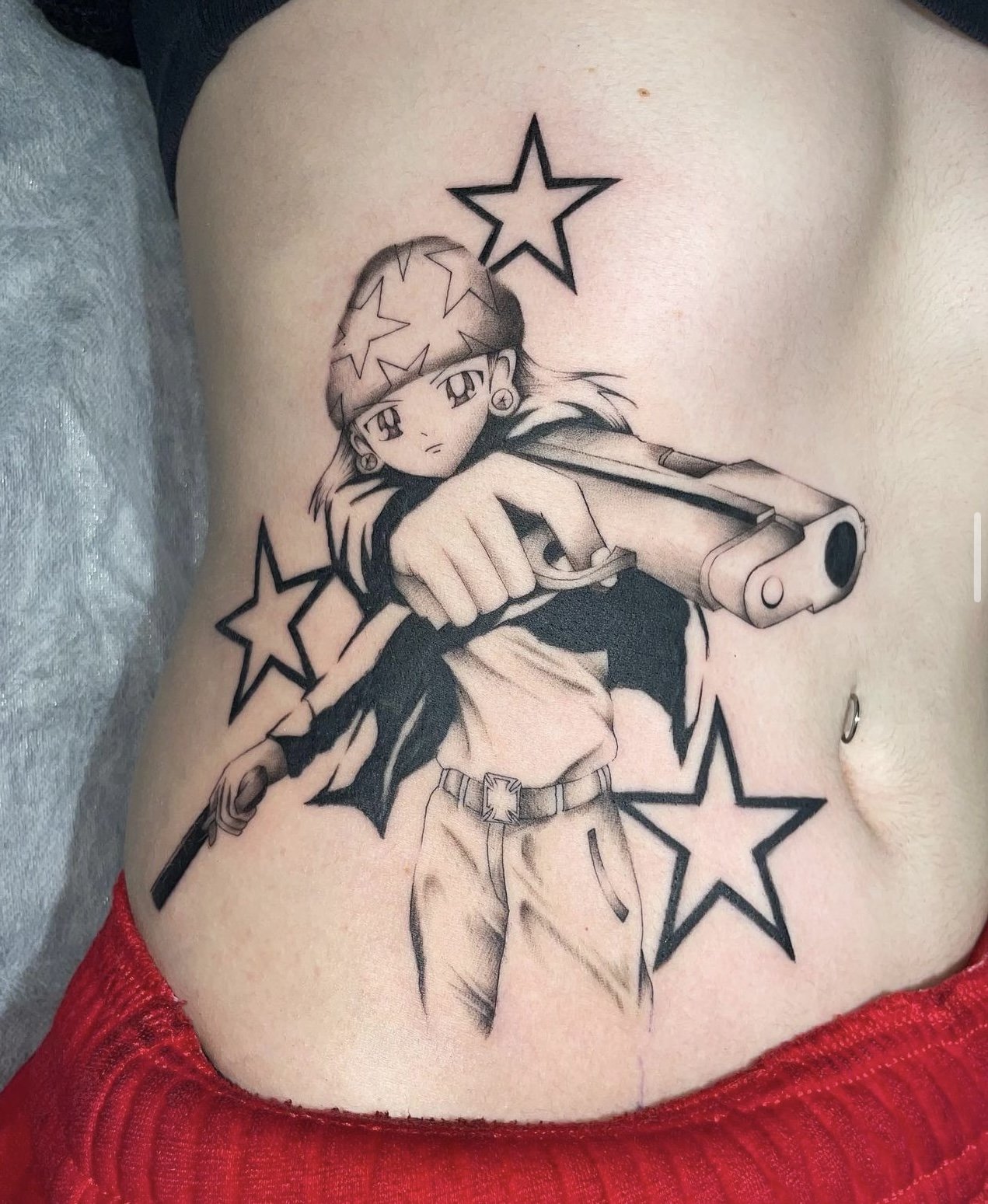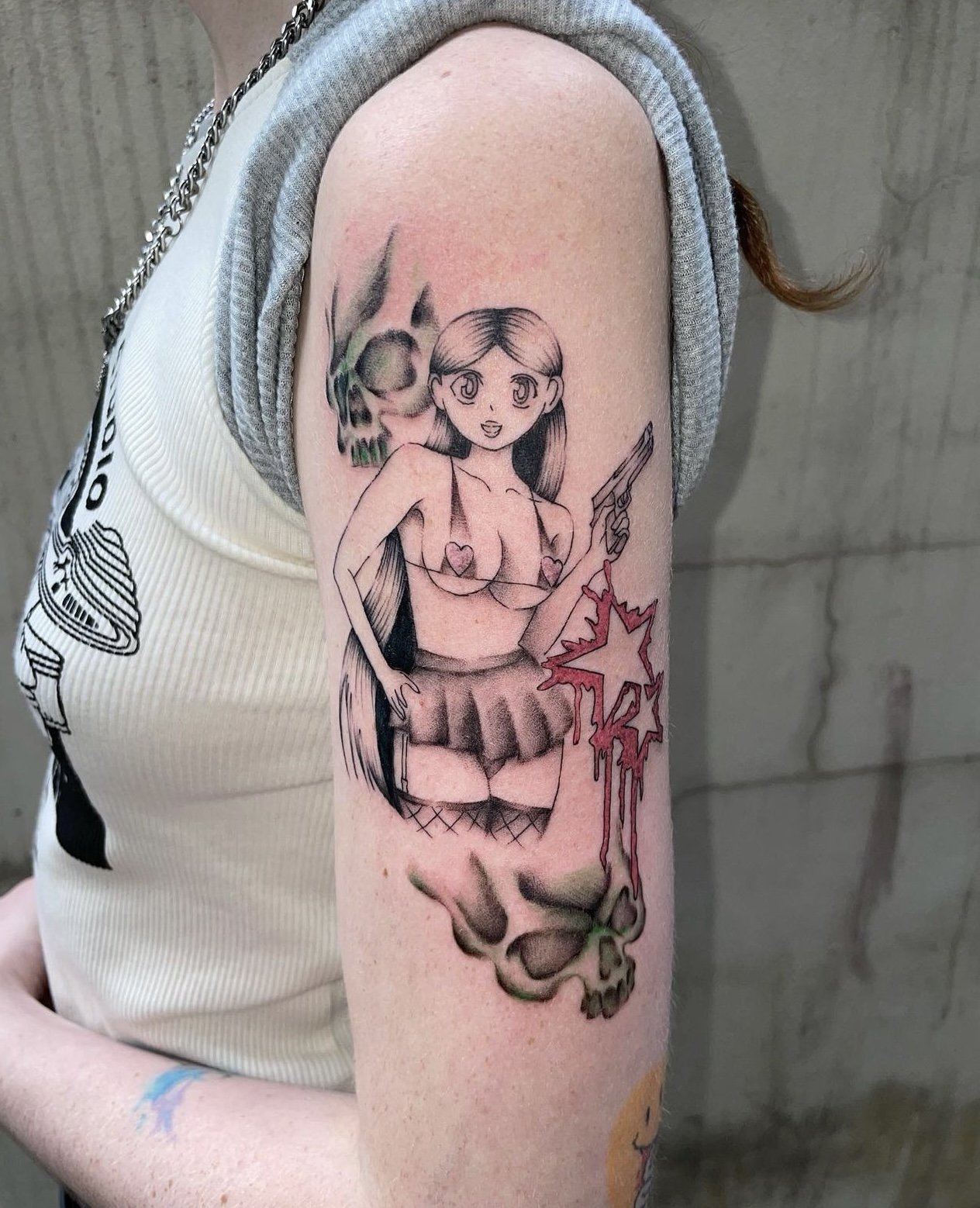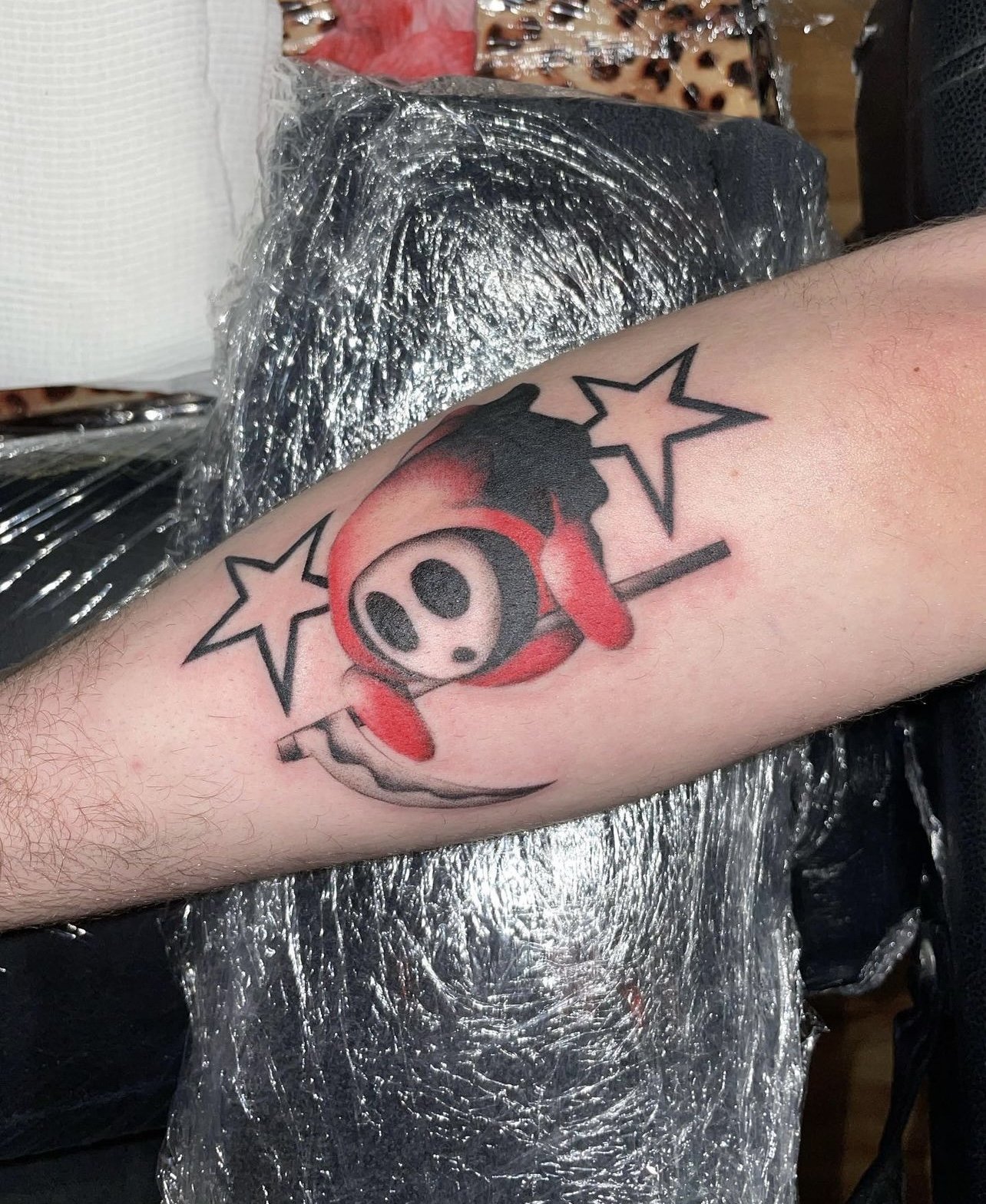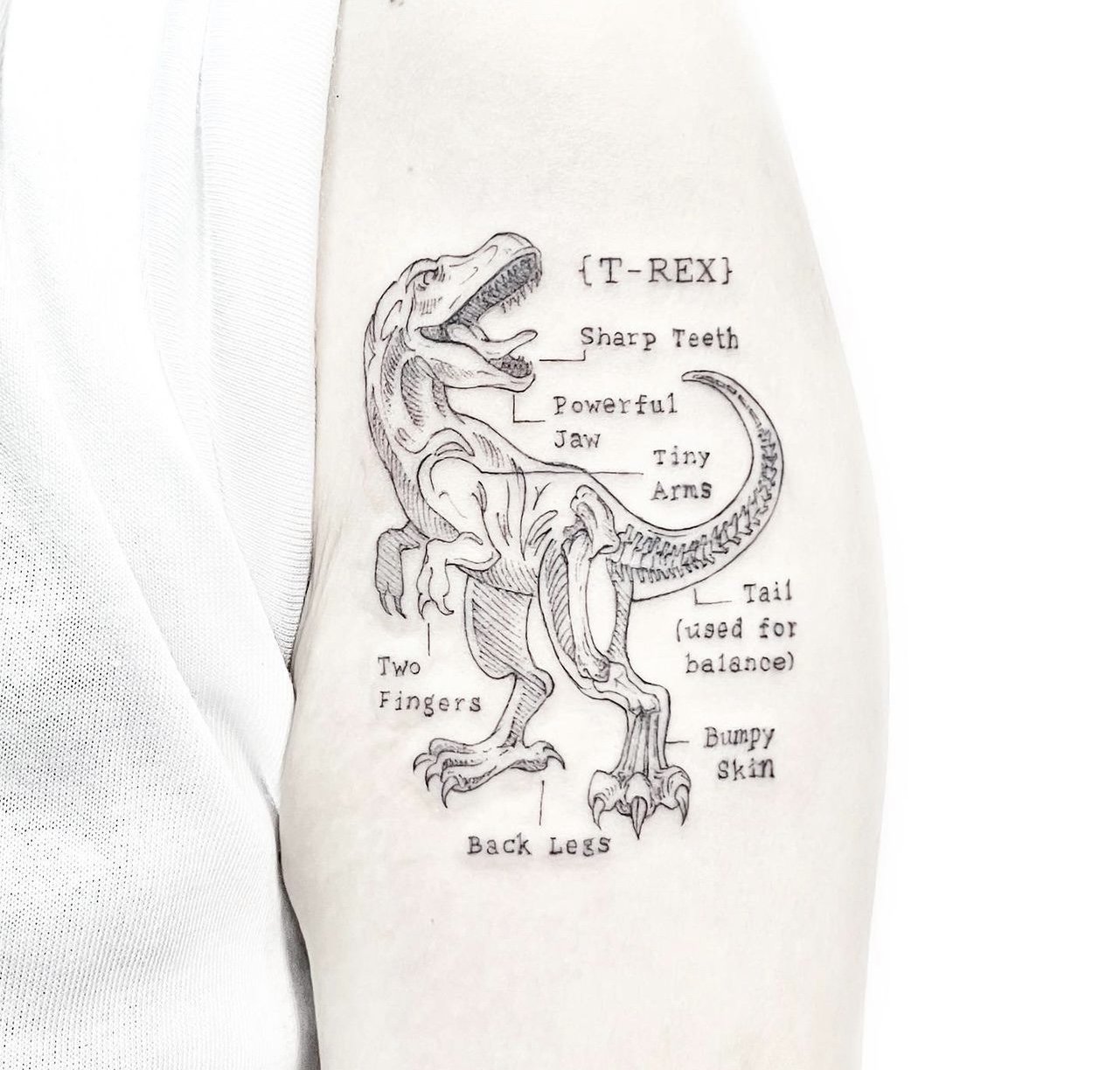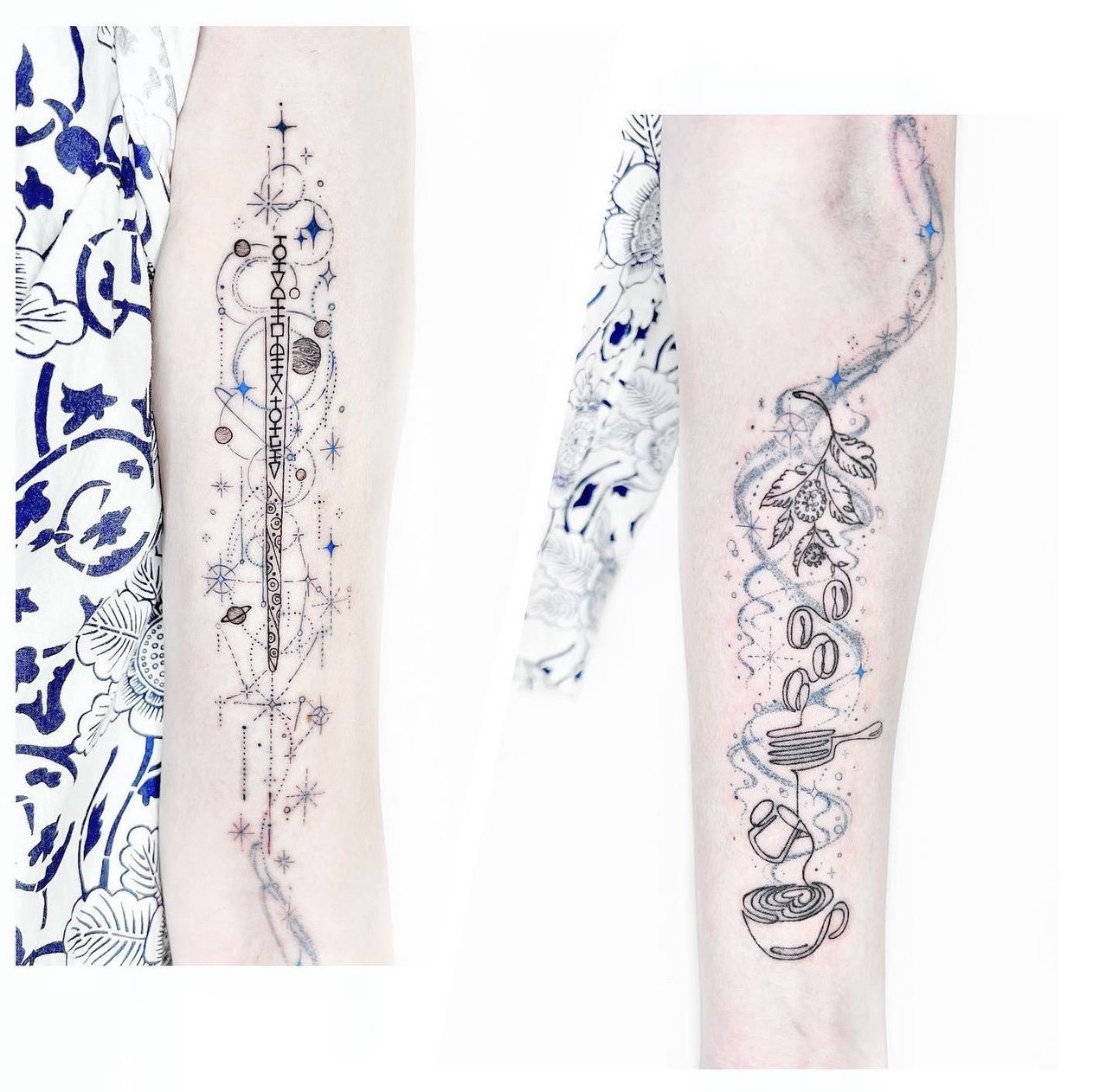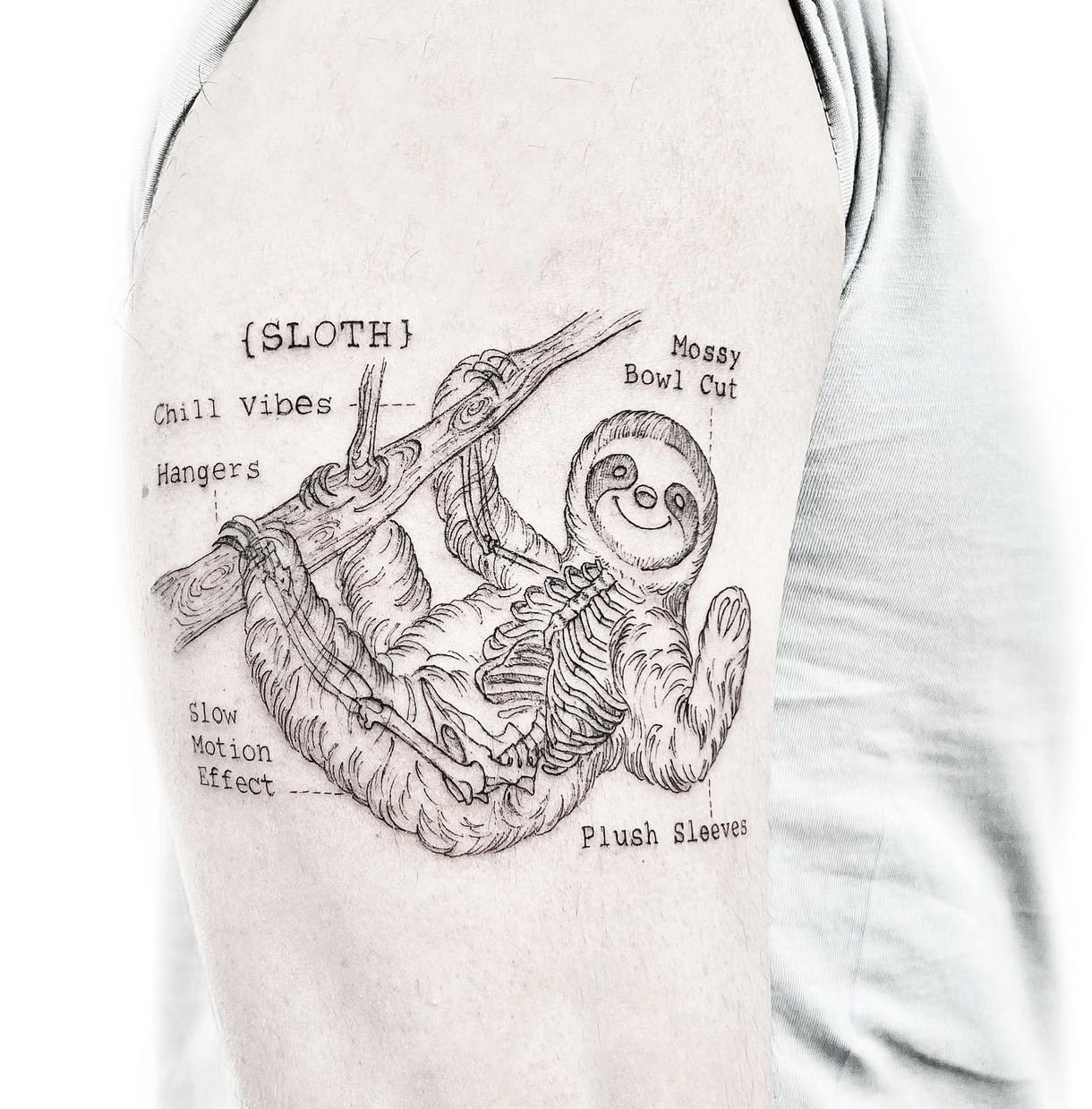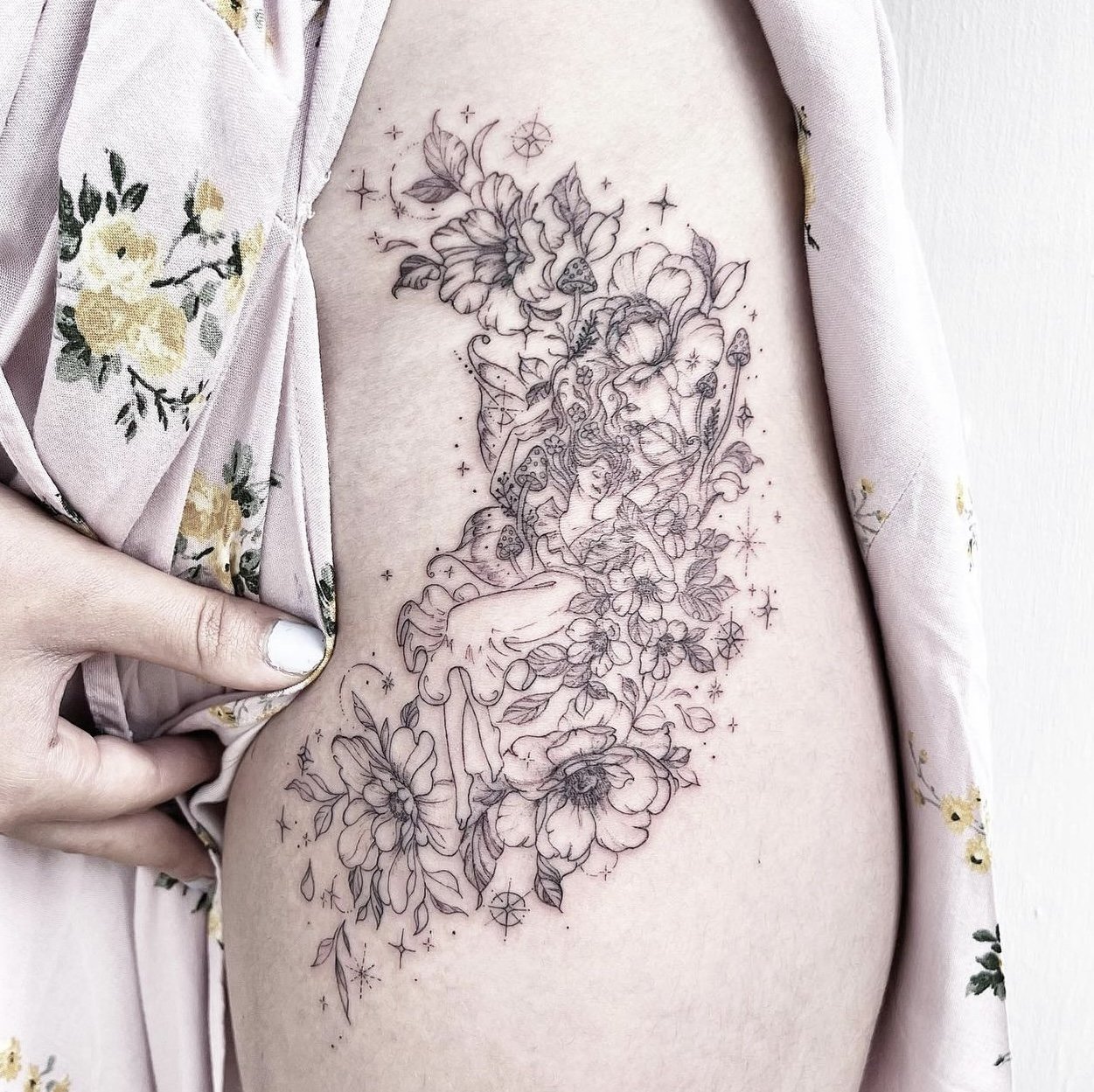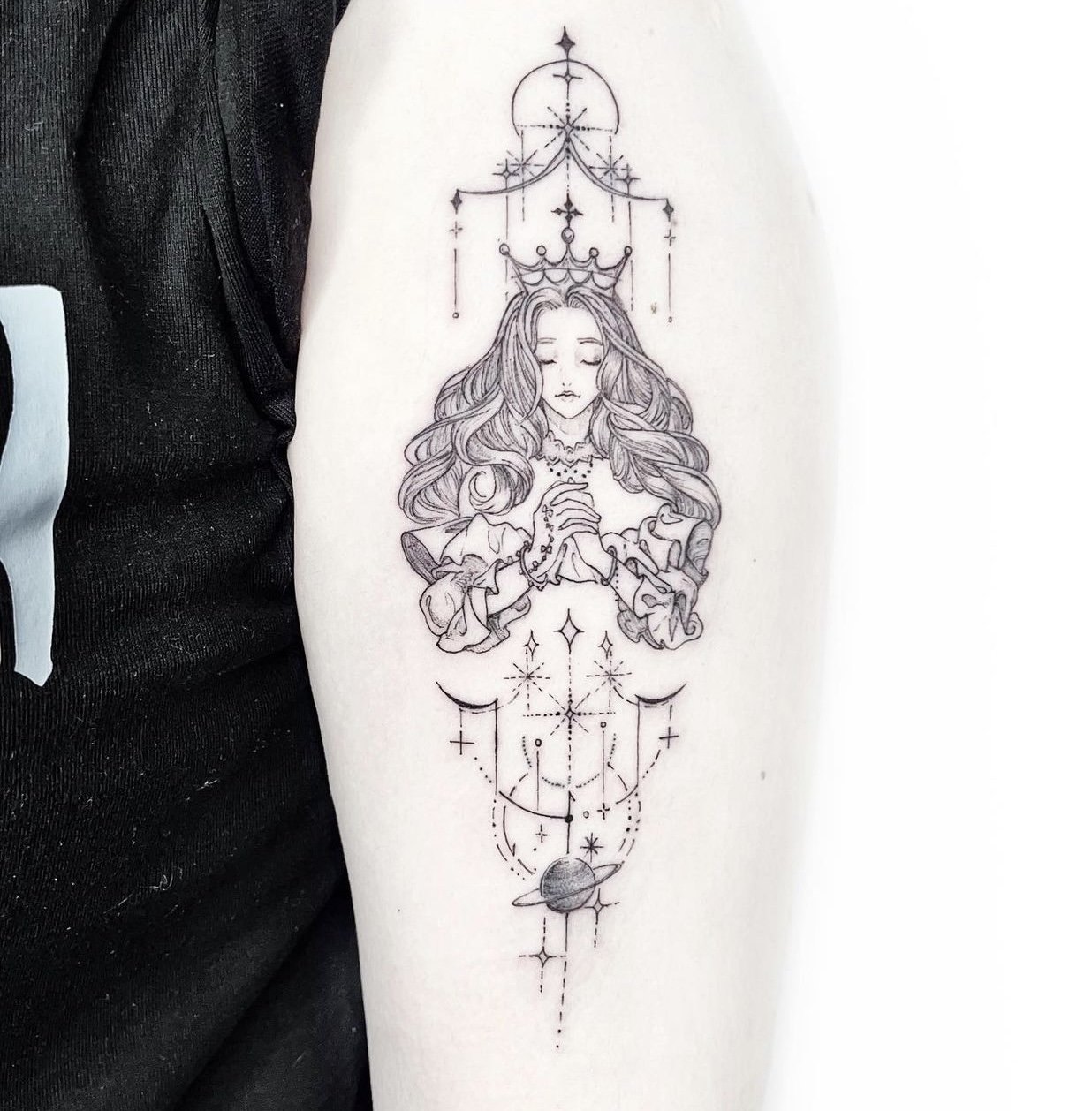Horiyama recently completed this double arm Japanese Irezumi sleeve tattoo including chest and torso plates with bold imagery and story telling throughout.
The arm sleeves tell a story of the circle of life. Starting on the left arm with a koi, continuing to the top of the left arm with a dragon koi and ending on the right arm with a dragon. An ancient legend tells of a large school of golden Koi that swam upstream in the Yellow River of China. They gained strength battling the current and swimming together up river. They arrived at a waterfall and many turned back, letting the flow of the river carry them away. The remaining Koi would not be deterred and attempted to reach the top of the waterfall but struggled in doing so. They strained and leapt, splashing back into the water. This splashing drew the attention of local demons who saw their effort and mocked them by maliciously increasing the height of the waterfall. Undeterred, the Koi continued on until, after 100 years of jumping, a single Koi finally reached the top of the waterfall. The gods recognized the exhausted Koi for its perseverance and determination by turning it into a shining golden dragon, the embodiment of strength and power. That waterfall became known as “Dragon’s Gate” and the story teaches us that with perseverance and determination can come great reward. The arm sleeves were completed in 2021.
Horiyama and her client Adam then worked on adding the chest and torso to this project. The Japanese word for frog is Kaeru, which means to return home and the Namazu is a giant underground catfish who causes earthquakes. The story of these two combined is that in any natural disaster you will always find your way home.
In the background to complete the design there is water and maple leaves to represent the river water theme.


























